Hello Daydreamers!
Today you are going to learn how to use and make Freezer Paper stencils to perfection with your Cricut Maker and Explore machine.
No worries, if you don’t have a cutting machine I will also give you some tips and tricks, so you don’t miss out on this cool technique.
Let me tell you that I spent a little fortune trying different paints and surfaces (including wood) to bring you guys the best guide on the Internet about stenciling with Freezer Paper.
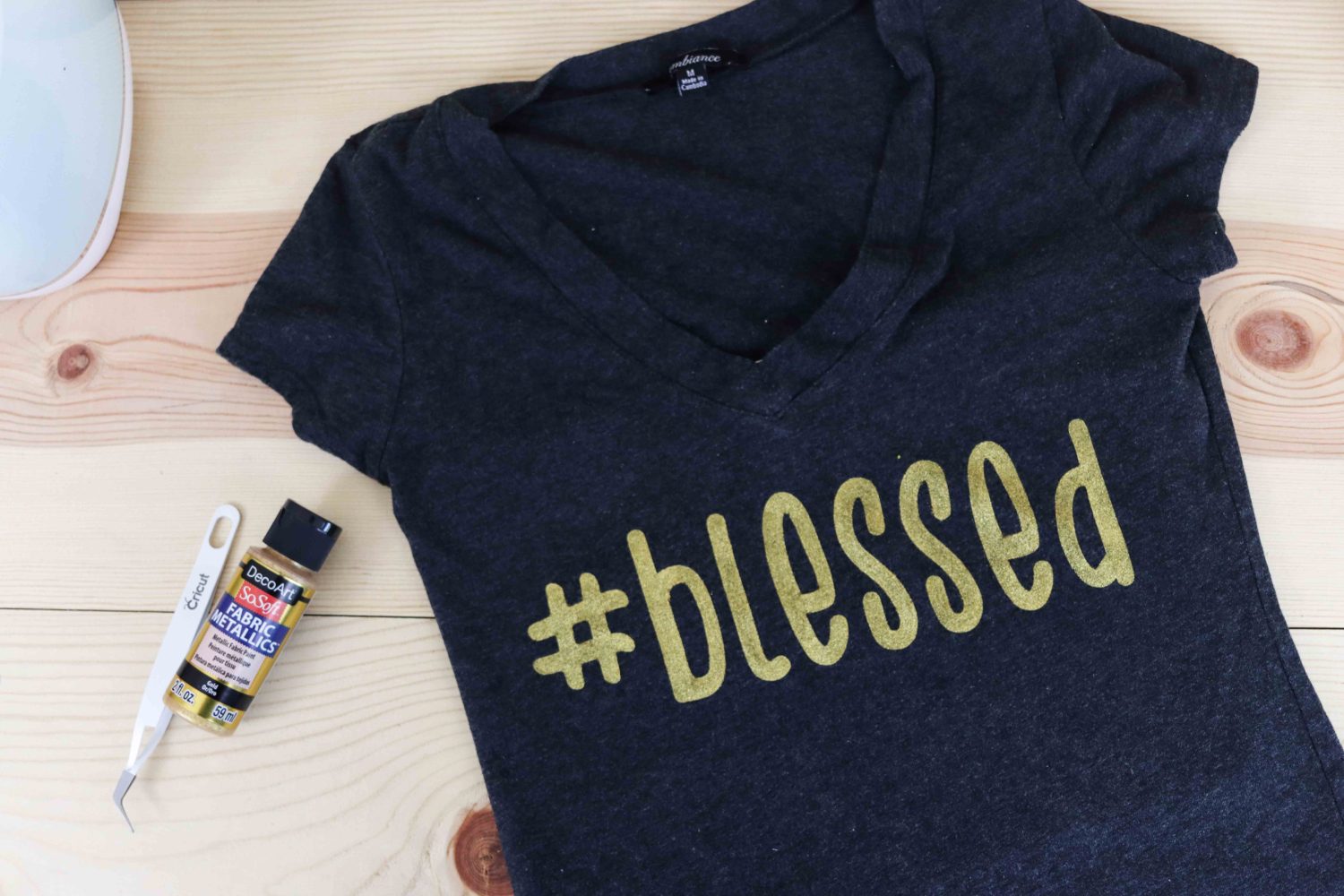
In a nutshell, these are the topics we will be covering in this tutorial:
- What is the Freezer Paper Stenciling Method
- Materials and paint you need to use to achieve the best results.
- Free SVG files and Printables to follow along
- Quick tips on how to make your Freezer Paper stencils without a cutting machine.
- How to Cut Freezer Paper with your Cricut Maker & Explore
– Using only freezer paper
– Using freezer paper and carrier sheets (My favorite thing in the world) - How to transfer freezer paper to your surface paint and heat set fabric.
- How to Care for your Garments
- Project ideas using freezer paper stencils, with fails and wins.
What is the Freezer Paper Stenciling Method
The Freezer Paper Method is a technique that allows you to make stencils that you can use to paint on fabric.
Freezer paper has a unique property. It has a regular finish on one side, and it’s coated finish on the other side; the coated side is what keeps food fresh when you store food in your freezer.
Something cool about this paper is all of the applications it has in the crafting world.
Thank you, Reynolds!
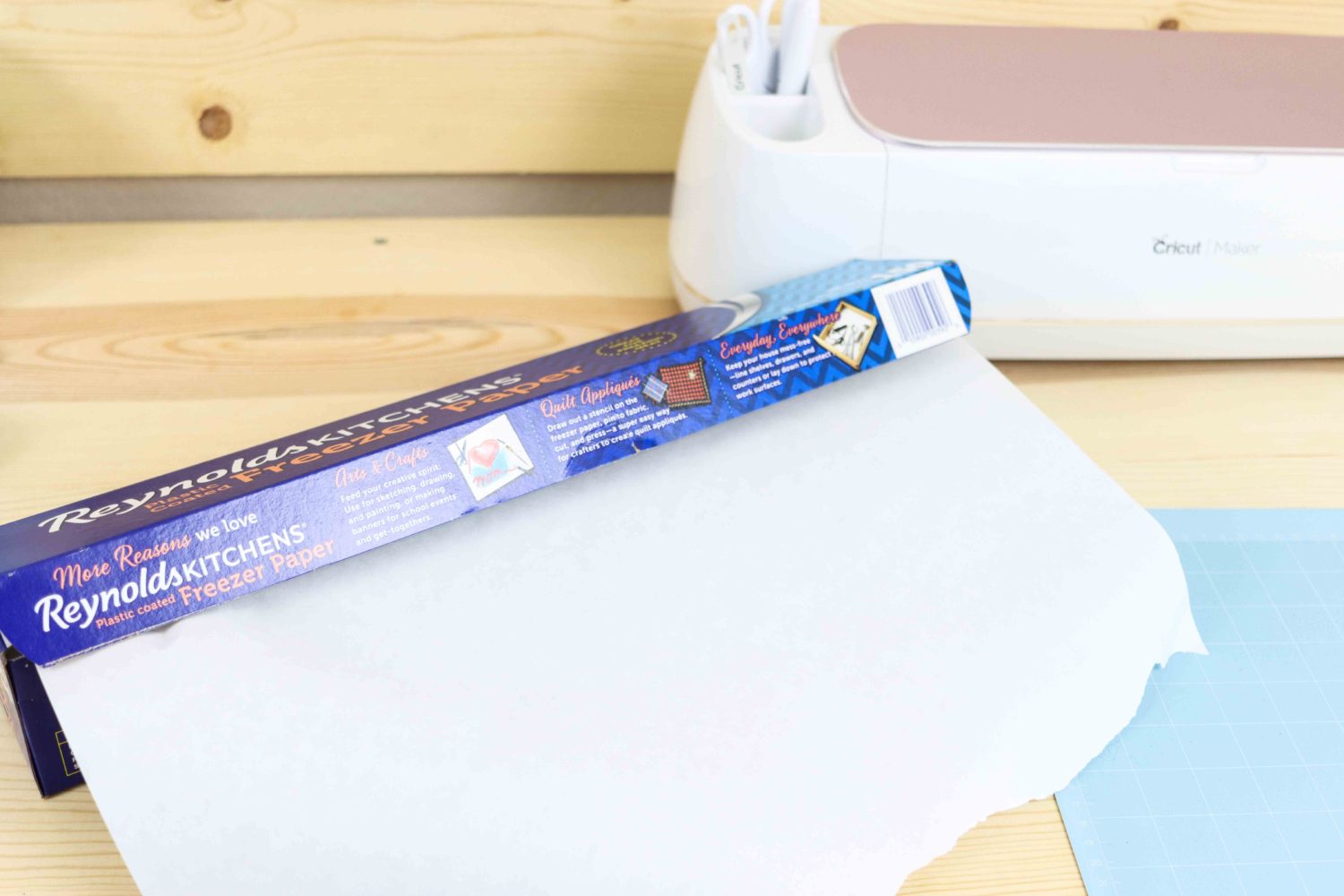
When you apply heat on the regular side of the paper against textiles, the freezer paper sticks to the fabric creating a beautiful seal that is ideal for painting.
Materials
This project is no sweat, and the materials are quite easy to find at Michael’s, Amazon, Walmart, and any other craft store.
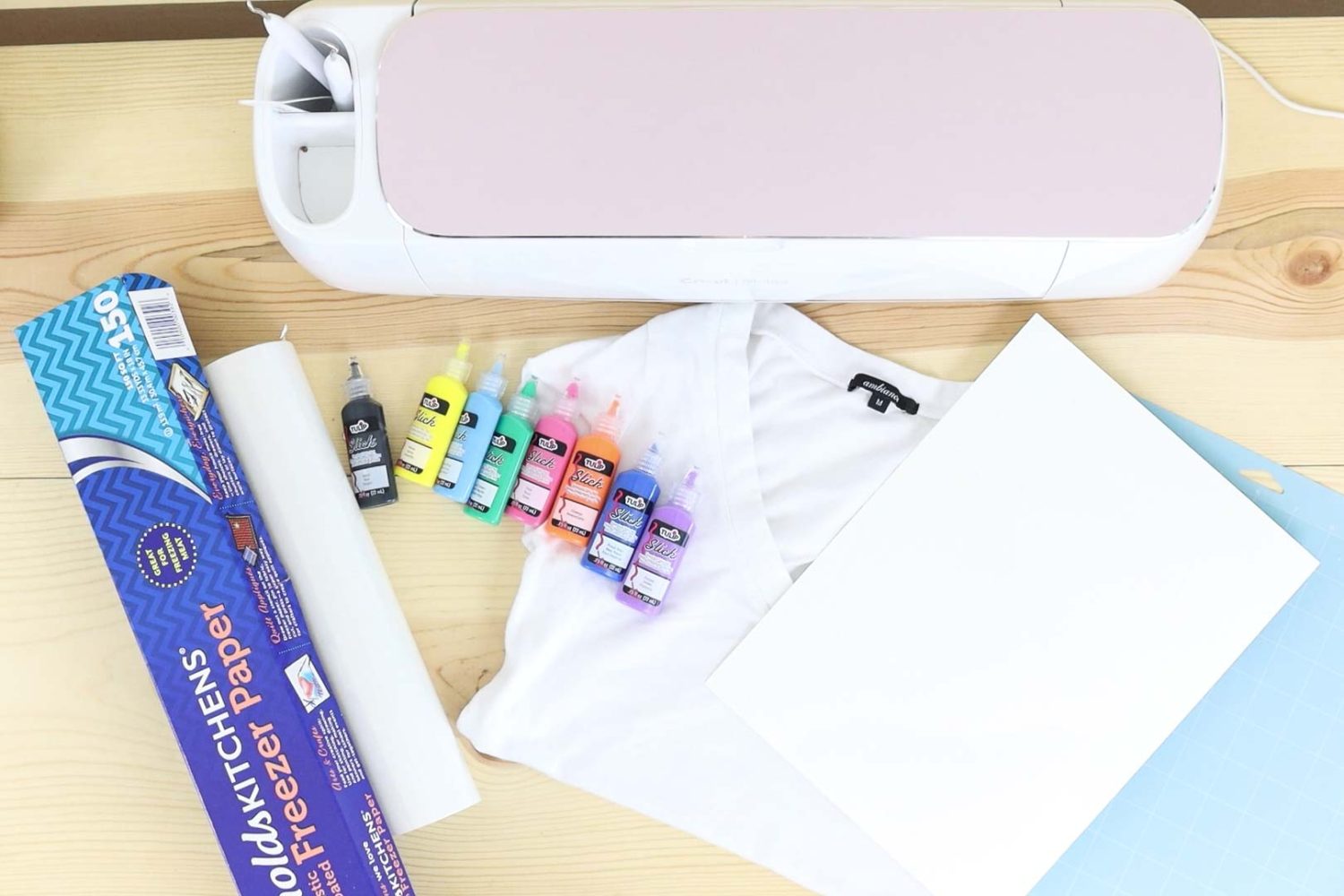
- Must have materials
- Fabric Paint
- Paint brushes, or sponge
- Freezer Paper
- Cardstock
- T-Shirt or blank you want to use (Prewashed).
- Iron
- If you have a Cricut
- Maker or Explore Machine
- Fine Point Blade
- Light Grip Mat
- Heat transfer carrier sheet (optional)
- Weeder (Optional)
- If you don’t have a cutting machine
- Precision knife
- Cutting mat, or surface to protect your table.
- Printer
I encountered a lot of troubles with the paint, so make sure to read my disclosure on it.
Paint you need to use to achieve the best results
As mentioned at the beginning of this post, I spent a couple of hundred dollars testing different types of fabric paint.
I had no experience whatsoever, but I learned A LOT, and I want to transfer this knowledge to you.
The type of paint you want to get will depend on the color of the fabric you want to use and the effects you want to have.
If you are using the freezer paper method on very light colors or white fabric, any fabric paint should work. But if you are using dark colors, you need high pigmented paint.
Before you purchase paint, make sure you read the description of whether it works on dark fabrics or not. And also, read the reviews!
The Tulip Fabric Paint I bought from Amazon it’s beautiful, and you can use it to make dimensional designs.
I got a package with their most popular colors and also the ones with glow in the dark one.
Because who doesn’t like glow in the dark?
Although they are super cute and the colors are vibrant, unless you dimensionally use them, they will no work on dark fabric.
You can apply Tulip paint in thin layers on white fabric, and it will look beautiful. However, the final product, in my opinion, looks handmade.
It would work great for kids projects and things like that. But, if you want to use them in your adult clothes, I don’t recommend it.
Something neat about this paint is that it’s very soft and stretches with the fabric as well.
I also tried Opaque Acrylics by Jacquard; the colors are beautiful and vibrant. However, this particular paint was supposed to be very pigmented, and I had no luck with them whatsoever.
For them to work in dark fabrics, you need to add a second coat (maybe a third), and this particular paint is not as smooth, and it makes the fabric stiff and not comfy.
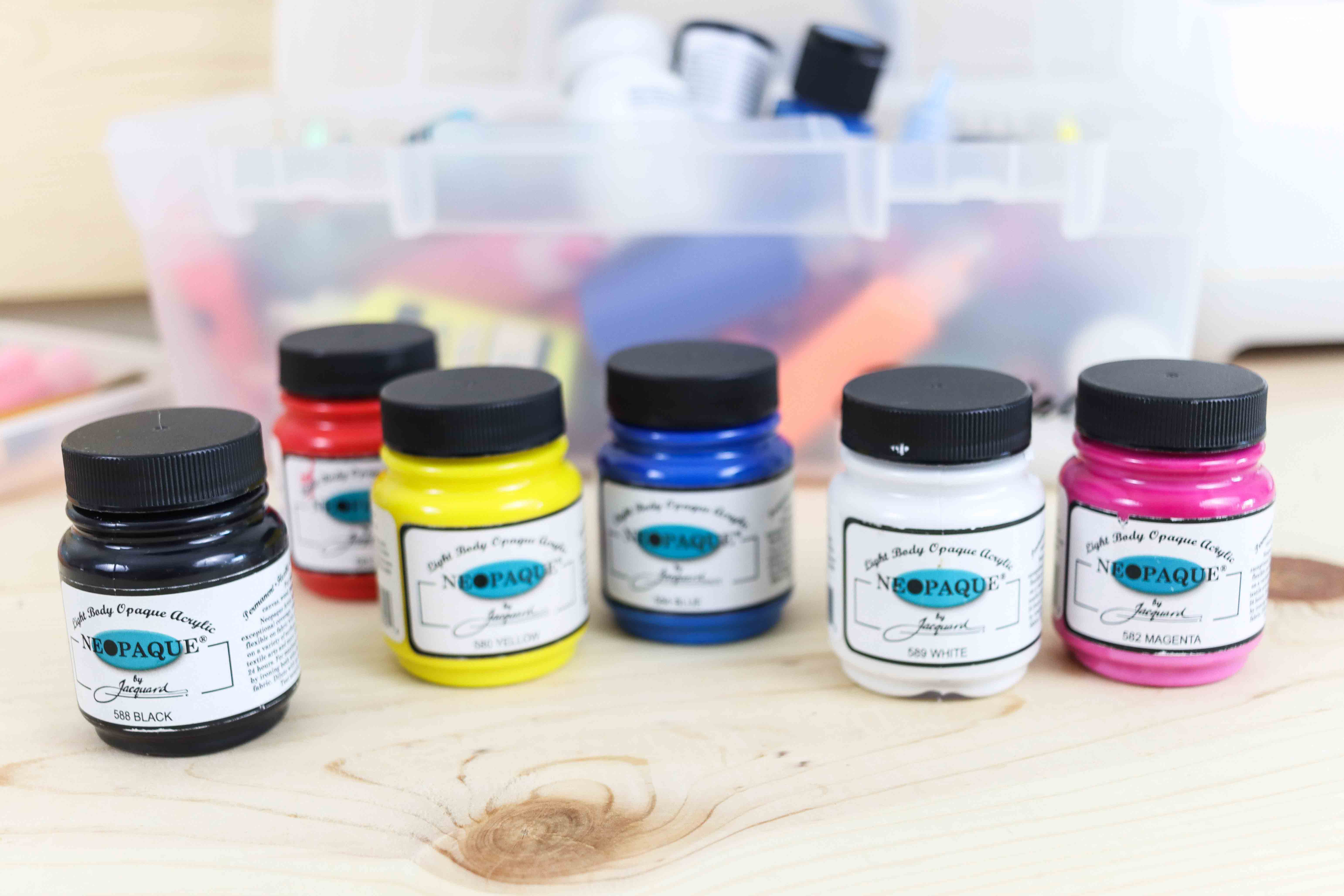
I also tried the Speedball brand (their opaque options), very common for screen printing t-shirts. I got the white pearl and silver colors, and they are beautiful.
The white pear is very pigmented, you may need a second coat, but it’s so smooth and creamy that it doesn’t feel uncomfortable at all. The silver color looks so good in dark colors with a single coat that I just can’t take it!
Hands down, my favorite paint in my discovery was the DecoArt Sosoft Fabric Paint!
I won’t lie to you…
It’s a little bit more expensive, but it’s so beautiful, and it glides over the fabric like butter.
I didn’t get their white color to test on dark fabrics because I thought the jacquard brand was going to work.
In conclusion, if you want the most beautiful finishes the best paint brands are:
- Speedball
- DecoArt
Make sure that if you are using dark fabrics, you buy their opaque paints. And try little by little. You can buy them on Amazon, Michaels, and other stores, but I found the best prices at dharmatrading.com
Here’s a link for DecoArt paint, and a link for Speedball Paint. (Not affiliate links, but I want you guys to get the best deals 😉 )
Tip – Practice
Before you do your first project with the freezer paper stencil method, grab some old t-shirts, socks, in different colors, and see how the paint behaves.
Free SVG files and Printables to follow along
The best way to learn is by practicing.
Get the following SVG files and upload them to Cricut Design Space.
Note: If you don’t have a Cricut, you can save this PDF file with and print them the size intact.
There are two ways you can save them to your computer.
You can either right-click on each thumbnail and select the option “Save image as,” or you can click on the buttons down below the gallery.
You can only save them from a desktop computer; smartphones are not that smart when it comes to SVG files.
Before you download, support my work by following me on Instagram and subscribing to my Youtube Channel.
Oh!
Just so you know, I also have a library full of free SVG files and Printables for all my subscribers, a.k.a. Daydreamers. You can see a preview right here or get access by filling out this form.
Tips to make Freezer Paper stencils without a cutting machine
If you don’t have a Cricut or cutting machine, you can use a precision or craft knife to cut out the stencil from the freezer paper.
My favorite way to do it is by printing the design on the freezer paper.
Cut the paper in letter size (8.5 inches by 11 inches) feed it to your printer making sure you print on the regular side of the paper (not the coated size).
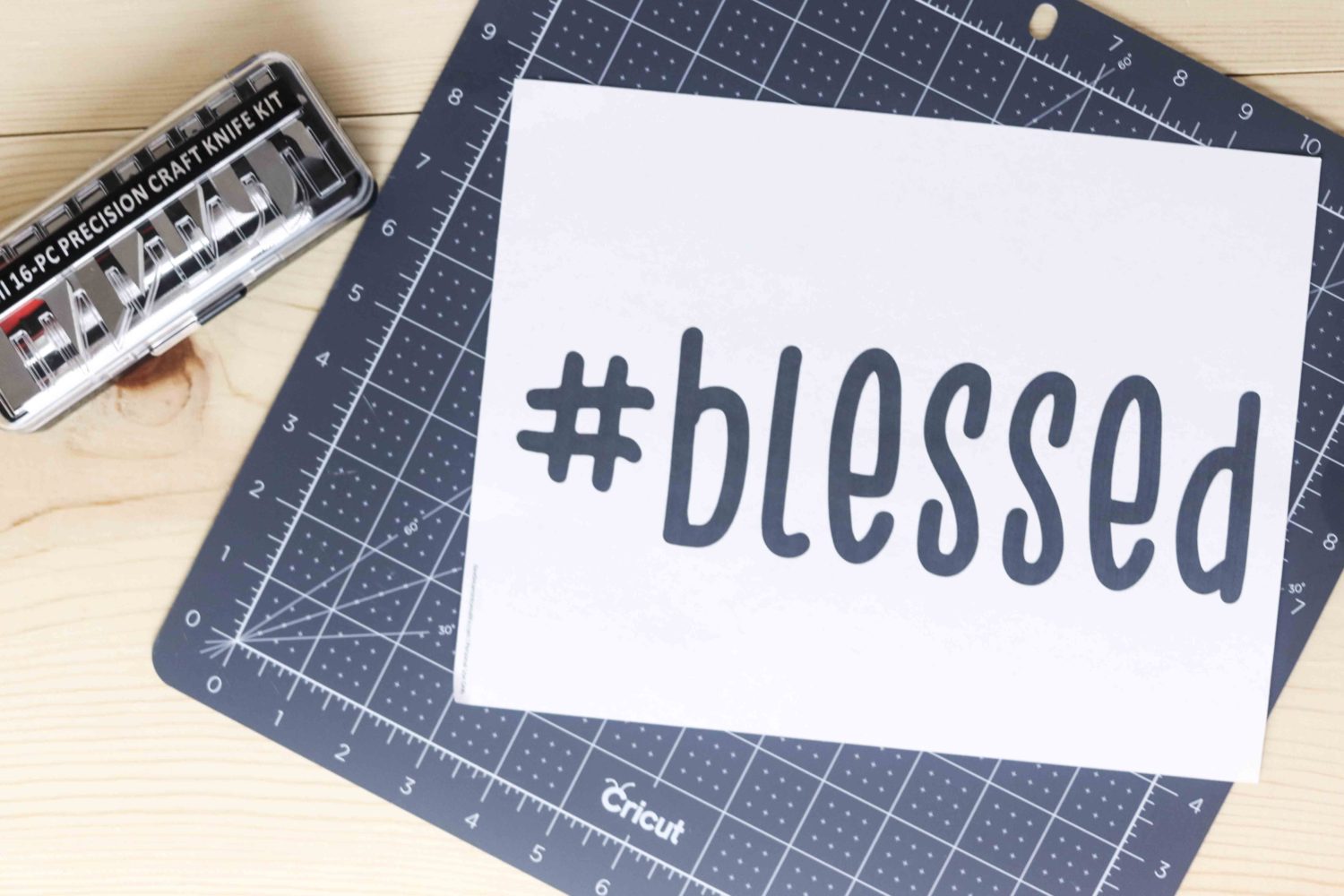
If the stencil you want to use is bigger than letter-size paper, place the freezer paper (coated side down) on top of the design you wish to use and trace it with a pencil.
Tip: As you get some of the letters out, use scissors to cut the inside out of them.
Keep it real, though!
Don’t use tiny and intricate letters unless you have ninja skills with the precision knife.
If you love making these types of projects, I truly recommend you treat yourself with a cutting machine.
Read all about the Cricut in this guide I put together.
If you don’t have a Cricut Skip to transfer and paint steps
Cut Freezer Paper with your Cricut and transfer T-Shirt
Before I show you the painting process, I want to teach you how to cut your stencils with your Cricut.
There are two ways you can cut the freezer paper with your Cricut.
The first one is by using heat transfer carrier sheets as a backing for the paper and the second one is by cutting the paper on its own.
Let’s see a step by step on how to do each one of them.
Using Freezer Paper Stencils with Heat Transfer Carrier Sheets
Using heat transfer carrier sheets is my favorite way to work with freezer paper.
These are the same sheets that attach to iron-on vinyl, therefore if you have some laying around, you can use them, or you can also buy them on their own.
I got this HT carrier roll from Amazon, and I had fantastic results.
Because who saves carrier sheets?
I didn’t before, but I think I’ll start from now on.
Step 1 – Design Space
First, upload the design to Cricut Design Space and resize it to the size you want/need.
When you are happy with the size of your project, weld it, and click on make it.
Since we are using carrier sheets, make sure that you turn your mirror on.
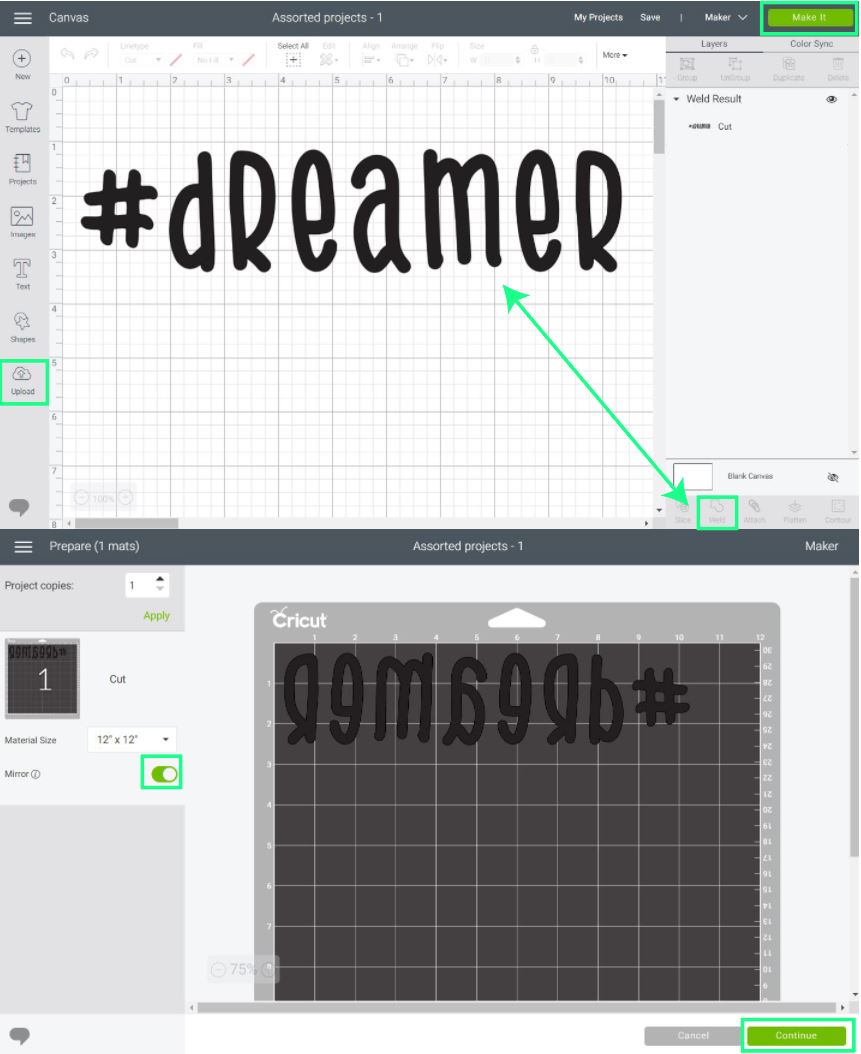
If you have a Maker, select freezer paper from Design Space, and if you have an Explore, move Smart Set dial to custom and choose freezer paper from Design Space.
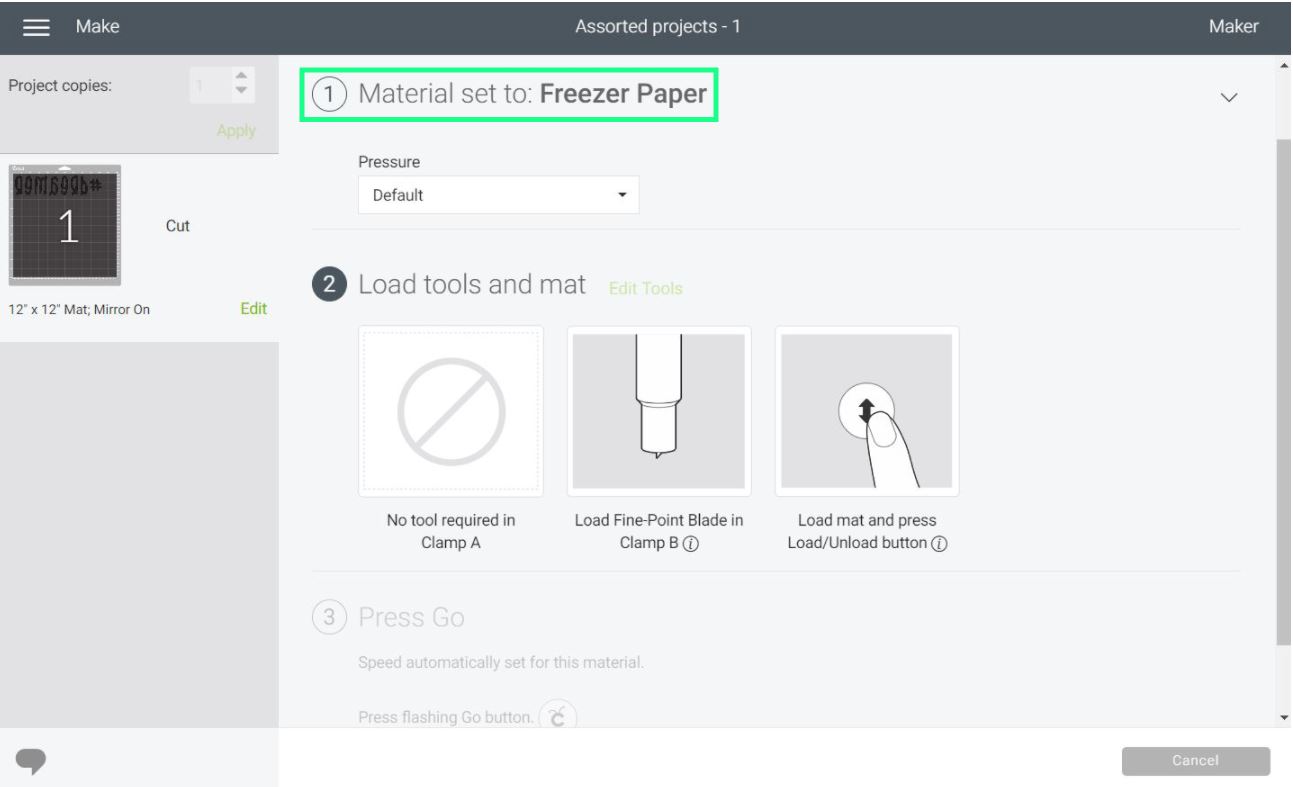
Step 2 – Mat Arrangements & Cutting Process
Cut freezer paper and stick it on carrier sheet regular (non-coated) side down.
Use the scraper or brayer (my favorite Cricut tool) to smooth out bubbles and have everything nice and level.
Place carrier sheet on Cricut mat. The coated side of the freezer paper must be facing up.
Load it to your Cricut and press the flashing go button to cut your paper.
Here’s a quick cheat table for you in case you feel a little confused.
| Using Carrier Sheets | Mirror | Settings | Mat Placement |
| Cricut Maker | Yes | If you have a Maker select freezer paper from Design Space. | Place Freezer Paper on carrier sheet regular side down; when placed on the mat the coated side of the paper must be facing up. |
| Cricut Explore | Yes | Move Smart Set dial to custom and select freezer paper from Design Space. | Place Freezer Paper on carrier sheet regular side down; when placed on the mat the coated side of the paper must be facing up. |
Step 3 – Weed and Transfer
What I like about using heat transfer carrier sheets with freezer paper is that you can weed your design like you would with regular vinyl.
The carrier sheets will keep your design intact, meaning the letter holes won’t fall out during the weeding and transfer process.
Let’s get back on track.
When your machine is done cutting unload the mat and remove the design from it.
The critical part here is that you need to weed the parts where you want to paint.
It’s some sort of reverse weeding.
When you finish weeding, place the design on your t-Shirt and bond it with the t-shirt with your iron.
Set your iron to high heat. It takes about 10-20 seconds (constant movement) for the freezer paper to adhere to the fabric.
Wait a couple of seconds for the carrier sheet to cool off a bit and then remove it from the t-shirt.
Make sure that everything is bonded, and there are no spaces where the paint can sip through.
Using Freezer Paper Stencils no transfer mask
If you are using simple designs and script fonts, this technique works wonders.
However, if you are using very complex images and cursive fonts, you will be facing letter and image fall-outs.
You can prevent this by using stencil fonts and images, or by saving the pieces that stay in the mat when you remove the freezer paper from it and iron them one at time.
It can be quite consuming.
Step 1 – Design Space
First, upload the design to Cricut Design Space and resize it to the size you want/need.
When you are happy with the size of your project, weld it, and click on make it.
Since we are using the freezer paper on its own, leave the mirror off.
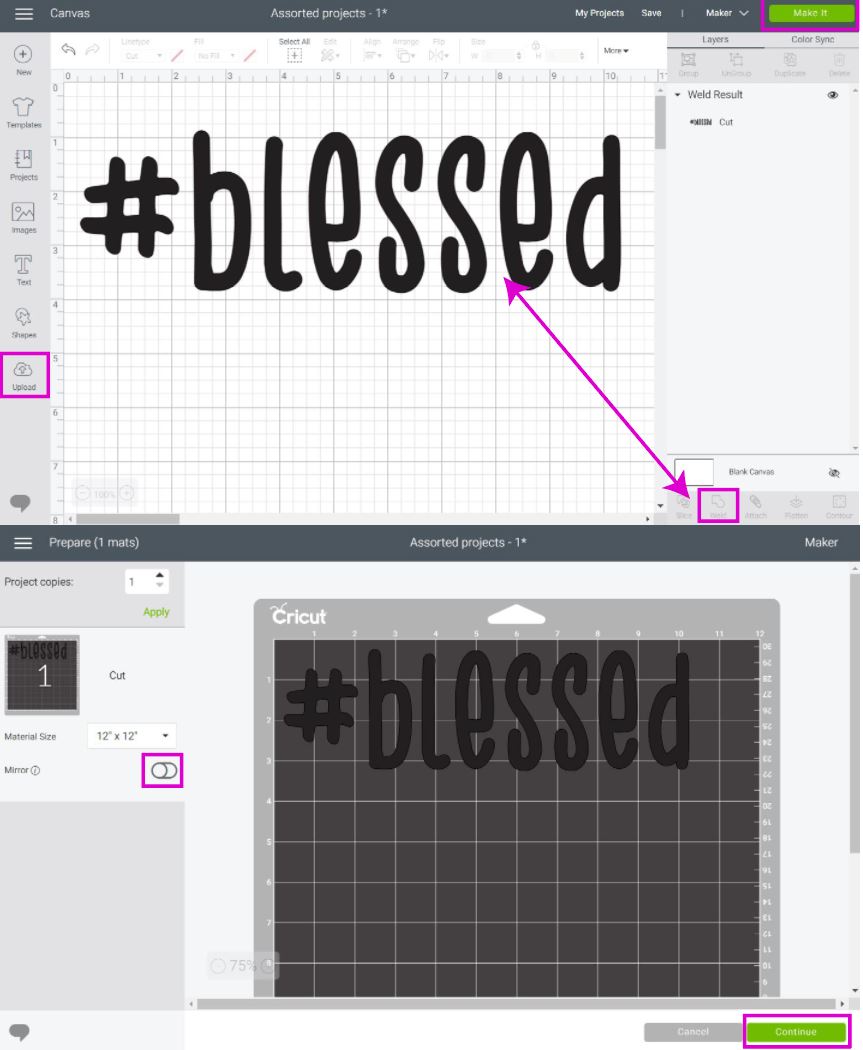
If you have a Maker select freezer paper from Design Space. And if you have an Explore machine move Smart Set dial to custom and select freezer paper from Design Space.
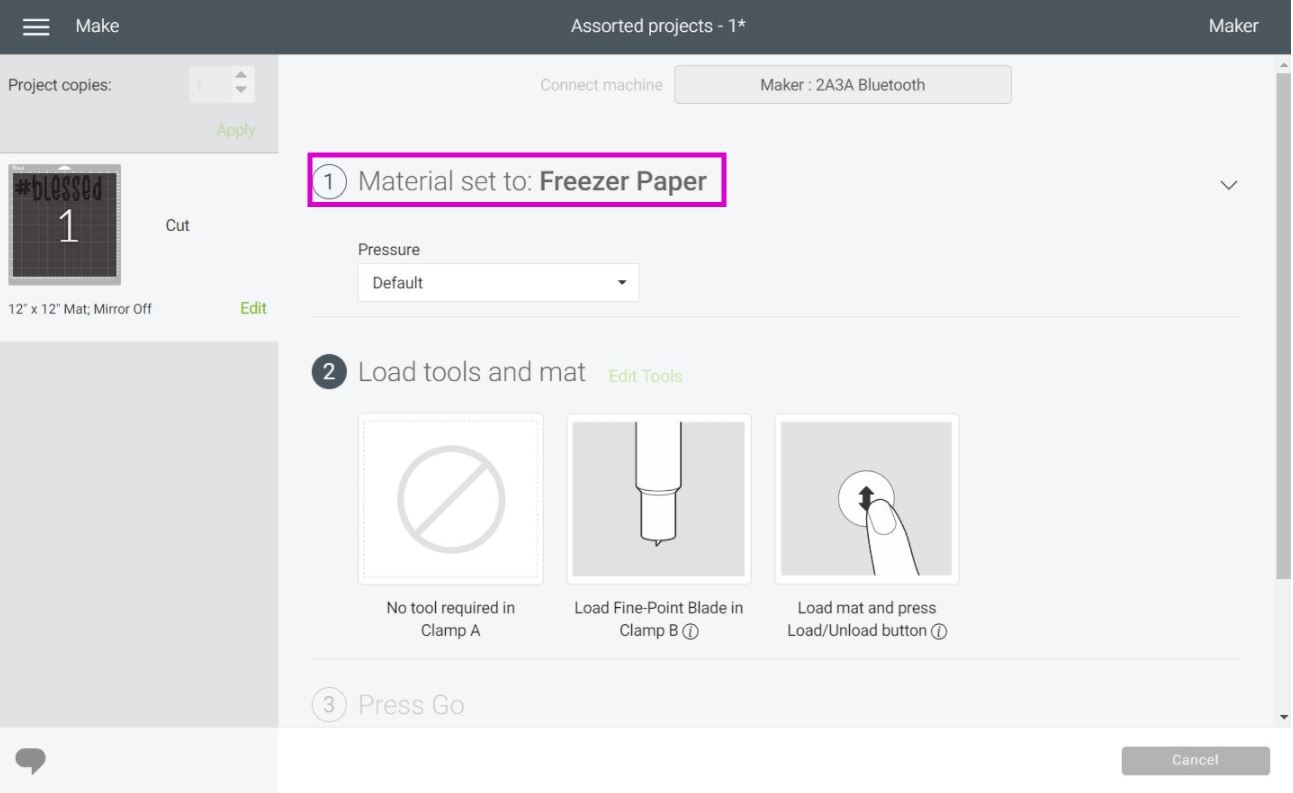
Step 2 – Mat Arrangements & Cutting Process
Place freezer paper coated side down, Load it to your Cricut and press the flashing button to cut your paper.
When your machine is done cutting unload the mat and carefully remove the freezer paper from it.
Don’t clean the mat yet!
You can transfer the fall-outs to your t-shirt one by one.
Here’s a second quick cheat table in case you feel a little confused.
| Frezer Paper on its own | Mirror | Settings | Mat Placement |
| Cricut Maker | No | Select Freezer Paper from Design Space. | Place paper coated side down on Mat |
| Cricut Explore | No | Move Smart Set dial to custom and select Freezer Paper from Design Space. | Place paper coated side down on Mat |
Step 3 – Freezer Paper Transfer
Turn on iron to a high setting and bond the freezer paper with the t-shirt.
Make sure there are no gaps where paint can sip through.
To restore the design to its initial condition, use the letter holes that fell out during the cutting process and transfer them one by one.
Paint Fabric with the Freezer Paper Method
It’s painting time!
There’s nothing complicated about painting fabric, just make sure you buy the right paint for your project.
For the following t-shirt, I used the Sosoft gold metallic paint by DecoArt.
Before you start painting, make sure you have a piece of cardstock inside your t-shirt.
The cardstock will prevent the paint from bleeding to the other side of your garment.
Note: You can insert the cardstock before you transfer the freezer paper.
Depending on the finish you want, you may want to use a paintbrush or a sea sponge.
A regular paintbrush will give you a smooth result, and a sea sponge will give you that lovely vintage look.
To prevent bleeding, use little paint at the time, and instead do two thin coats if the color isn’t as vibrant as you want.
When the paint feels dry to the touch, remove the freezer paper, and wait until it finishes drying before setting the paint with heat.
Look at this other example.
With the freezer paper stencil method, you can use different colors at the same time.
For this t-shirt, I used the tulip paints, and I love how vibrant the colors look, but not so much the final finish.
I am in my 30s, and I want to wear something that looks professional. However, these paints will look so pretty on kids’ clothing!
In fact, these paints (tulip) are designed to be dimensional and puffy, so I guess I could say I am using it wrong :/
Heat Set Paint on your Fabric and General Care
Note: Some paints don’t require heat setting, so I recommend you read and check out the paint instructions.
To make your design permanent, you need to heat set it.
And to show you how important this step is, I washed a shirt before I heat set it, and it got ruined right away.
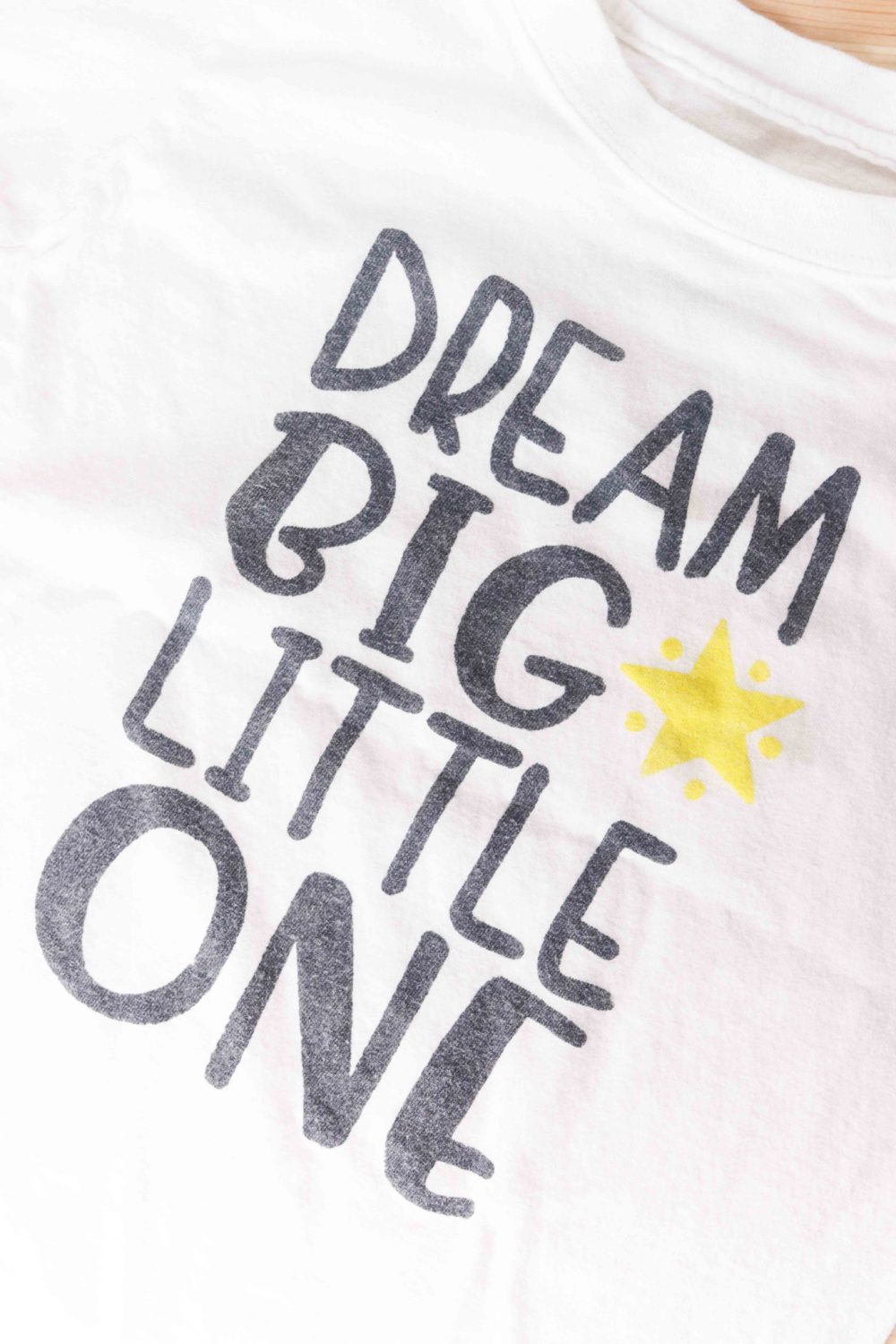
When your fabric is completely dry, give it a day or so.
Heat-set your fabric in a well-ventilated area so the fumes of the paint can disperse instead of being concentrated in one closed space and preheat your iron to the max temperature (Or to the max temperature your fabric can handle).
You can use an iron cloth and press the front of the fabric for about 2 to 5 minutes, or you can turn the material inside out and press it as I show you in the photo down below.
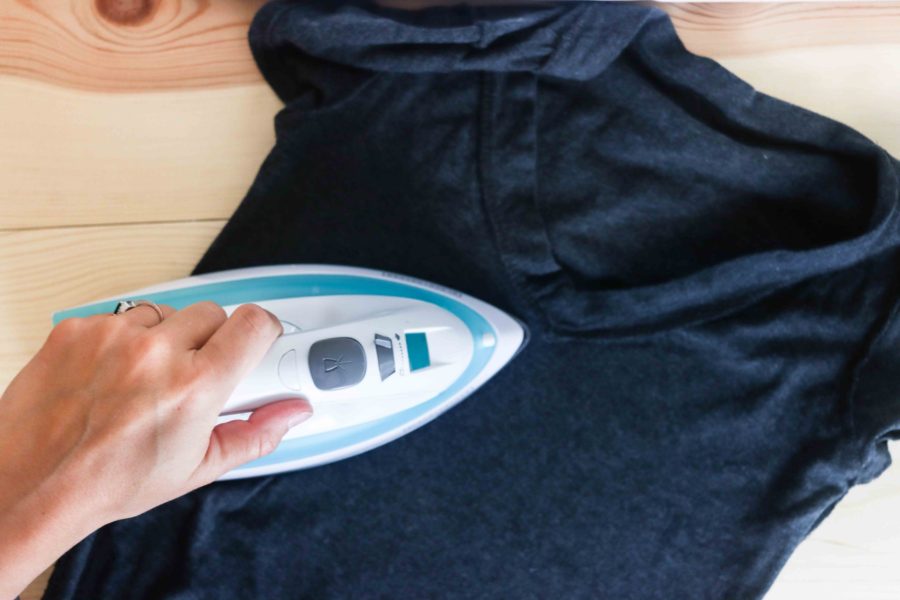
For best results, let your project cure for 5-7 days before you wash it.
I know it sounds like a lot of time, but you want to give time to the paint to completely bond with the fabric.
In addition to turning the garment inside out before you wash it, the care for your t-shirt should be the same one you usually have for the type of fabric you used.
I recommend you read any instructions in the back of your paint, or their website if you aren’t 100% of how to care for the paint.
Project ideas using freezer paper stencils
Now I want to show you more projects I made with the freezer paper stencil method.
I made this beautiful kitchen towel with DecoArt Sosoft paints, and I love the contrast between the black and the golden paint.
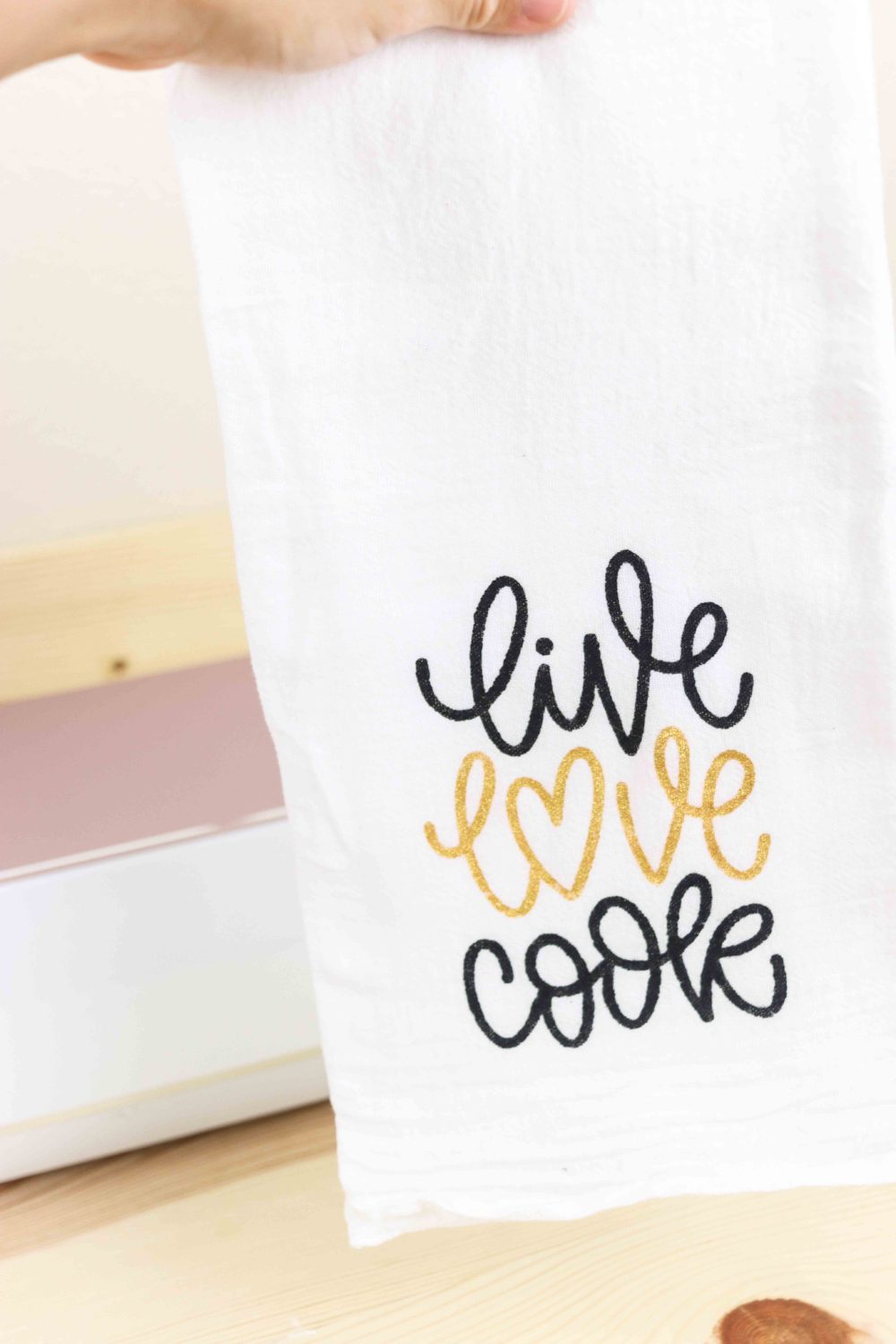
The kitchen towel’s image is part of Cricut’s library.
I also made a bunch of socks with freezer paper stencils.
These, for instance, I made with the white jacquard paint, I let them dry, heat-set, and then I applied glow in the puffy paint on top of them to add grip.
I didn’t like how the jacquard paint behaved with these socks, I had to apply two generous coats, and it didn’t work well for me.
The socks were quite stiff after that, so most likely, I won’t wear them, use Speedball or DecoArt brand instead.
Also, the glow in the dark effect made with the Tulip Paints doesn’t last a whole lot, but I still like it.
Now take a look at these beauties.
Gosh, I love them.
Don’t you think they look fantastic?
Important: If you are using new socks, I recommend you wash them a couple of times before you paint them.
Sometimes lint can get in the way when you lift up the freezer paper, or as you walk on them that new lint will fall out. In other words, use worn-out socks.
Also, these socks are not meant to walk on, they are quite delicate. They are more for fun. Use sleepers or shoes. And if you are someone that loves walking on socks, avoid this project.
Also, avoid fuzzy socks.
Honesty is key, and I care about the longevity of your projects!
For these socks, I used DecoArt Sosoft Metallic fabric paint.
Here are more examples of socks.
And again, I had the same experience. The purple ones were made with jacquard paint, and the grey ones were made with DecoArt paint.
I also made this t-shirt with another brand of fabric paint I didn’t mention (it’s not very common, and I wasn’t impressed), and it looked quite good at the end.
However, I decided to sacrifice it to see how it would look if I washed it without heat setting the fabric.
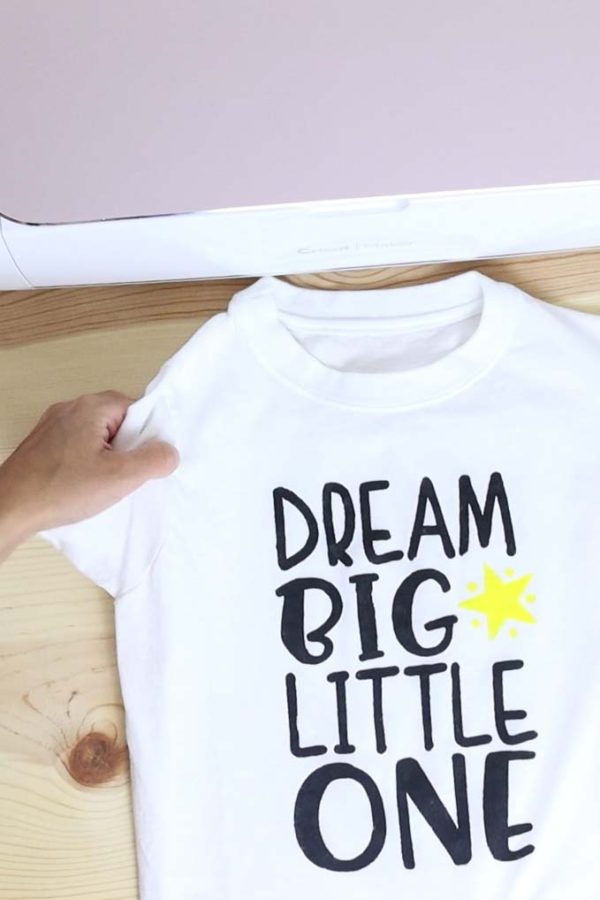
I also painted this baby suit with, again, jacquard paints. I wanted to see how the fabric will look with high contrast color.
After two generous coats, the stripes of the fabric were still noticeable, and the fabric was quite stiff at the end.
Unfortunately, I didn’t have any luck with that fabric paint.
They sell some sort of liquid that makes the paint soft and I had no idea about it until I had all my projects all stiff.
I think I’ll get it and I’d let you guys know.
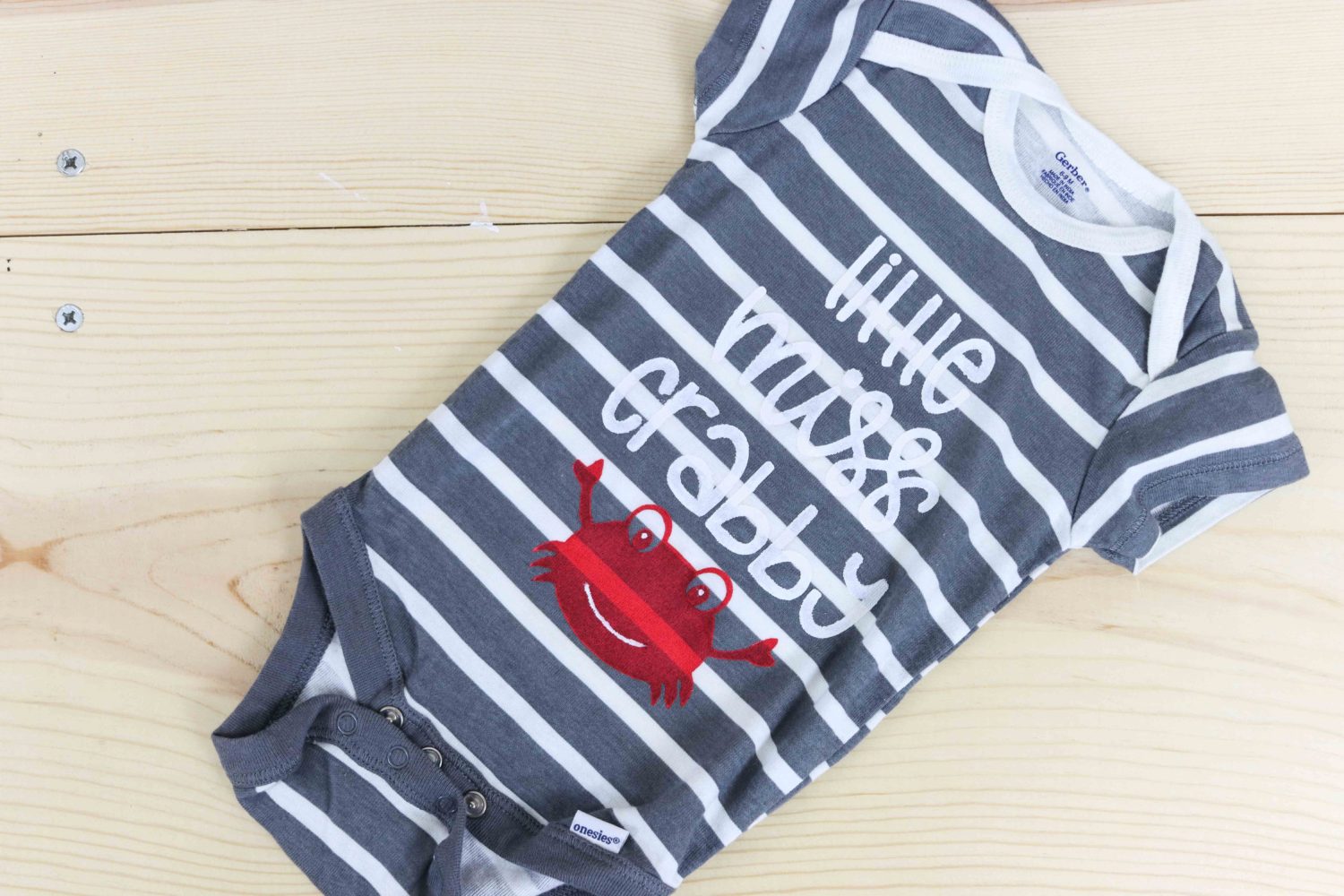
Last but not least!
Does the freezer paper stencil work on wood?
I used a regular iron and regular acrylic paint, and the paint bled all over the place.
I didn’t use any sealer or Mod Podge like some people recommend because I wanted to see if the freezer paper was enough.
It didn’t work for me!
Although if your wood is entirely even, it may work. Just try on the back of the wood in a small surface to see if it works or not.
I also noticed that the freezer paper wouldn’t come off completely. There were bits of paper left, and that’s another variable you need to consider.
If the freezer paper worked for you when using wood, please let me know in the comments down below, I would love to give it a second chance.
Share it


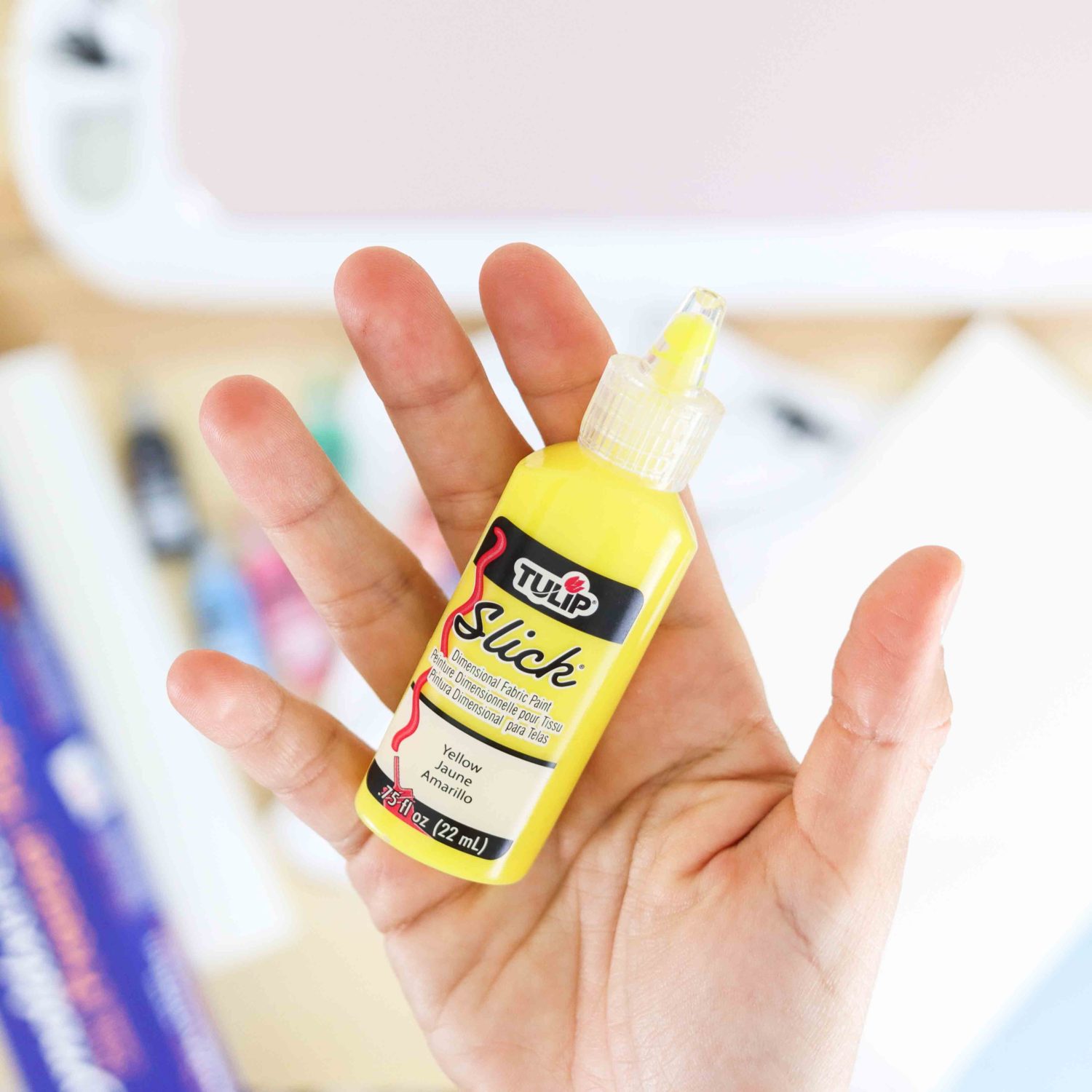
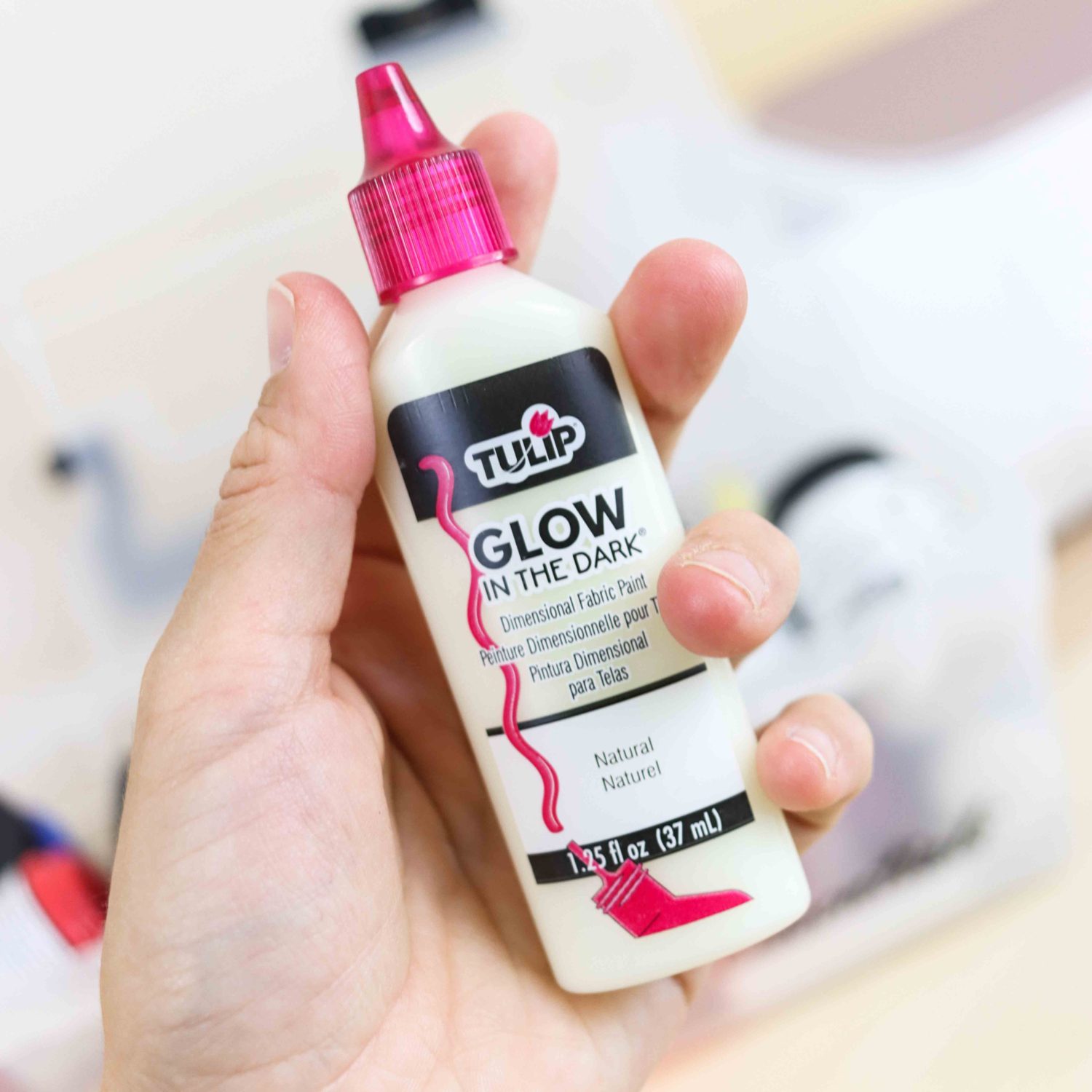
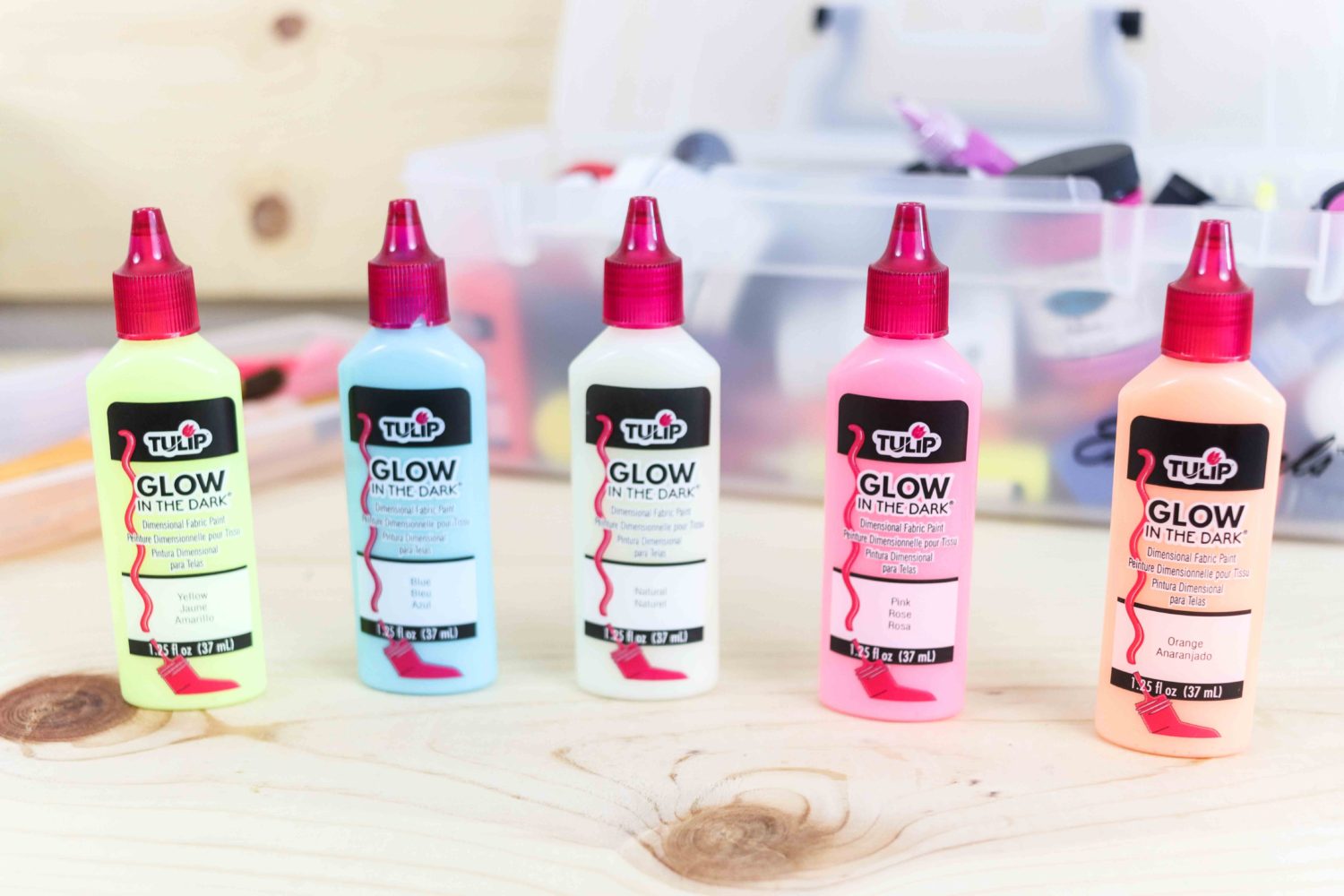
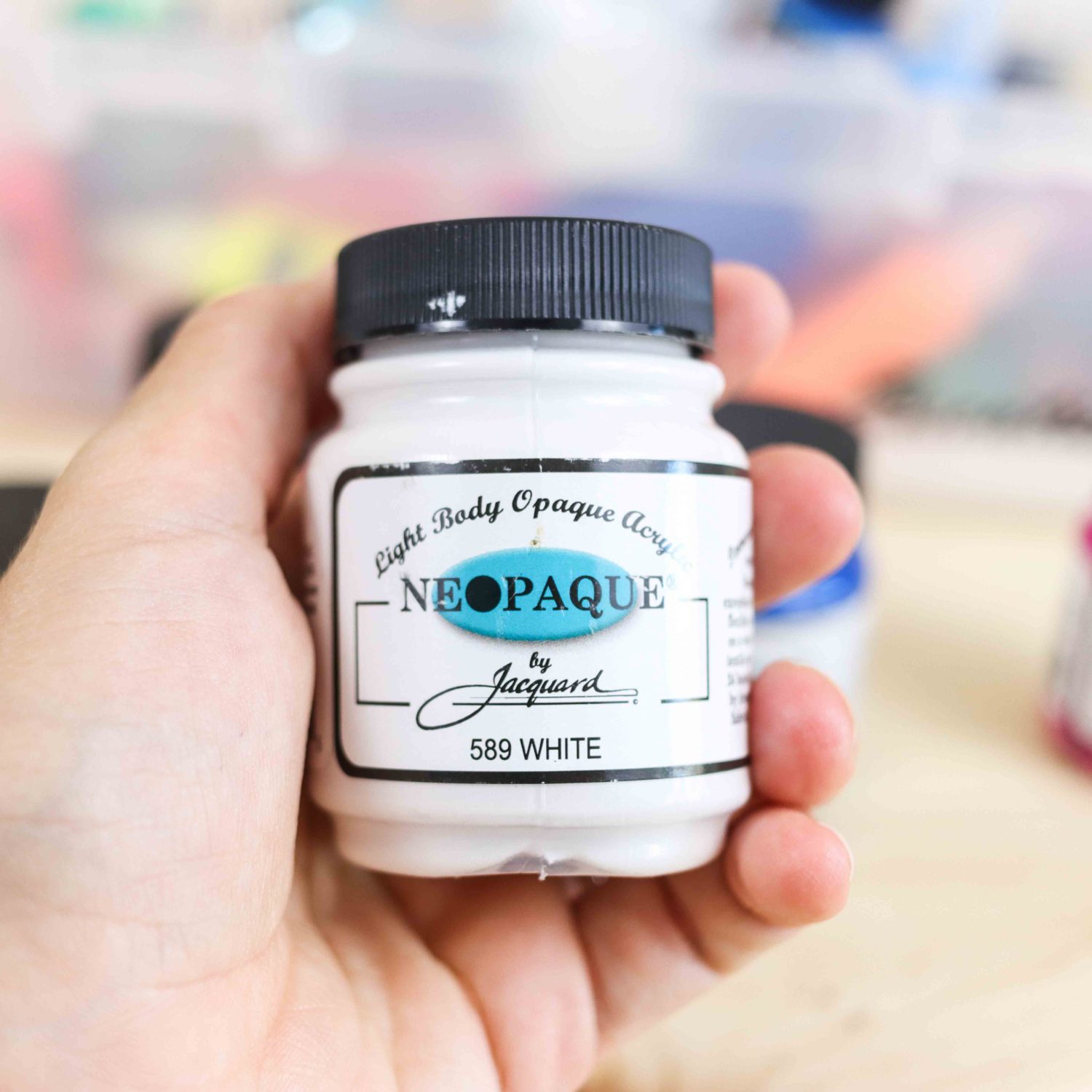
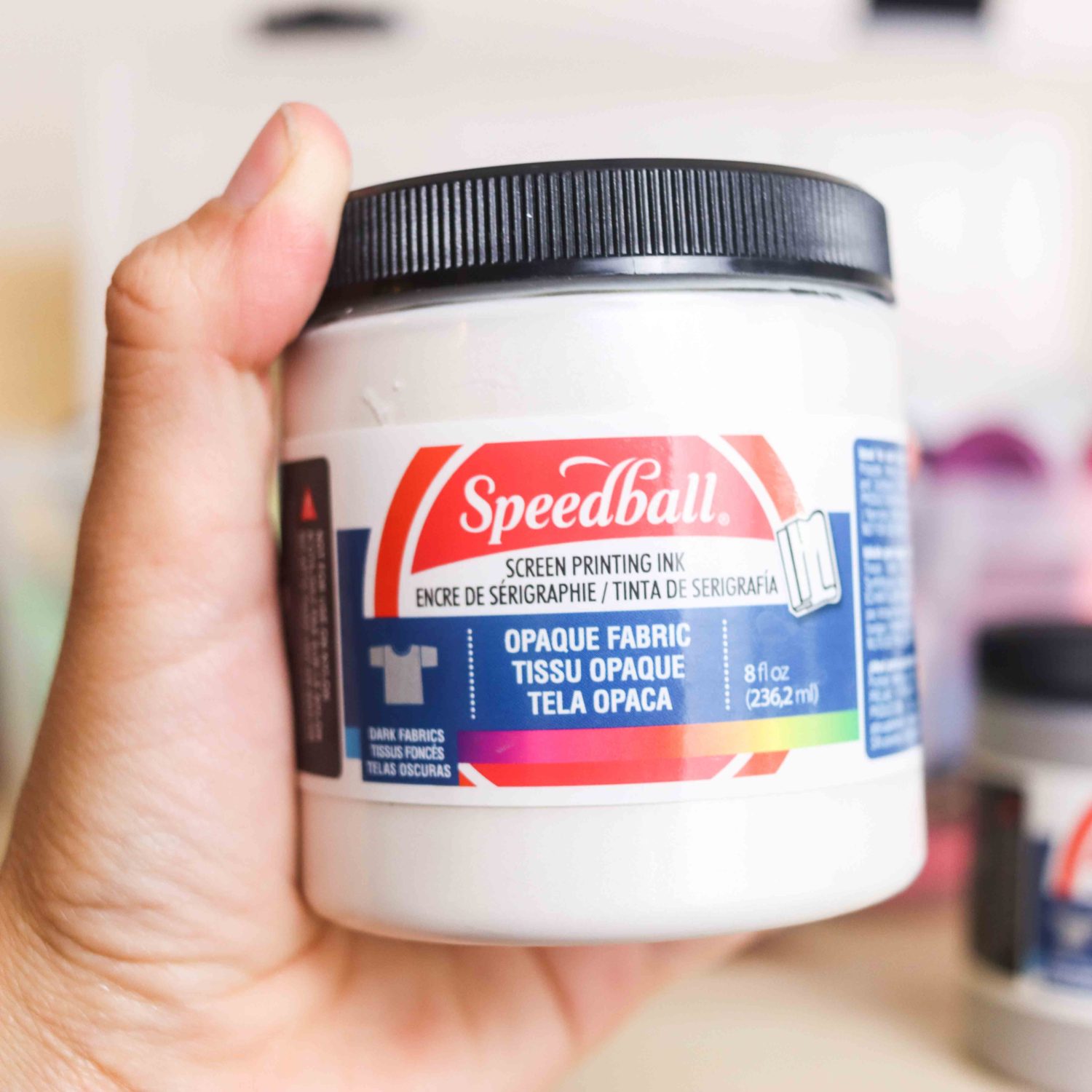
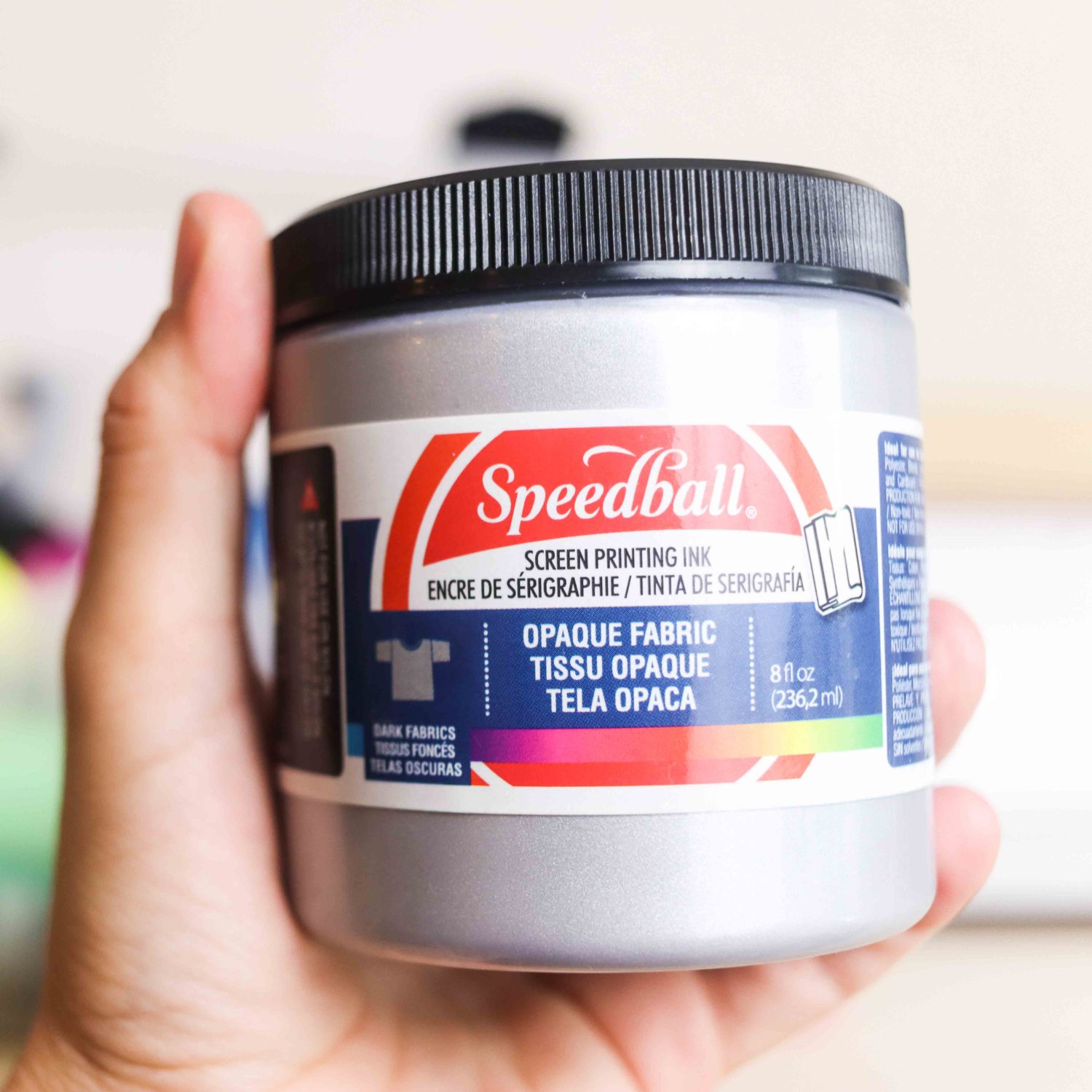
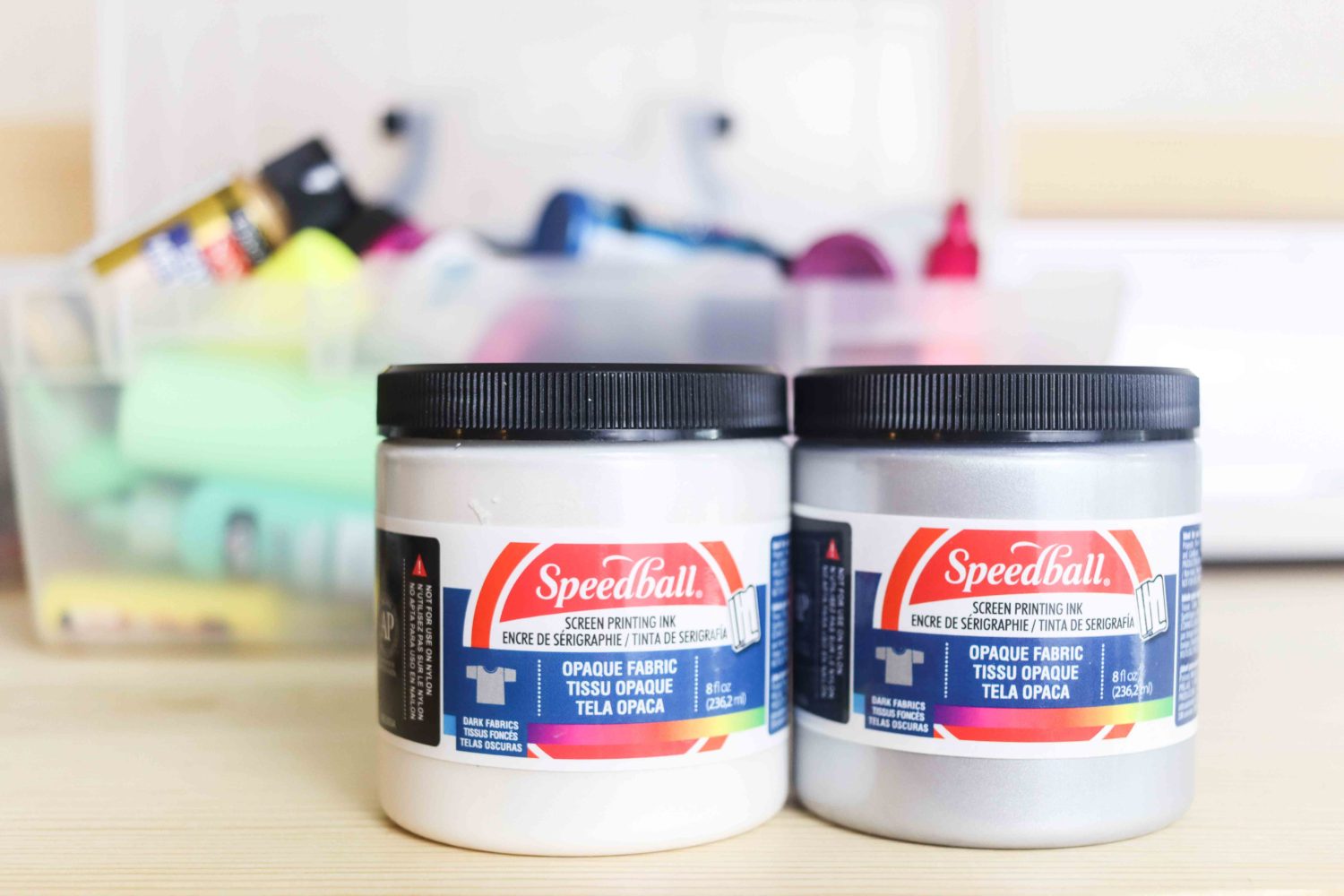
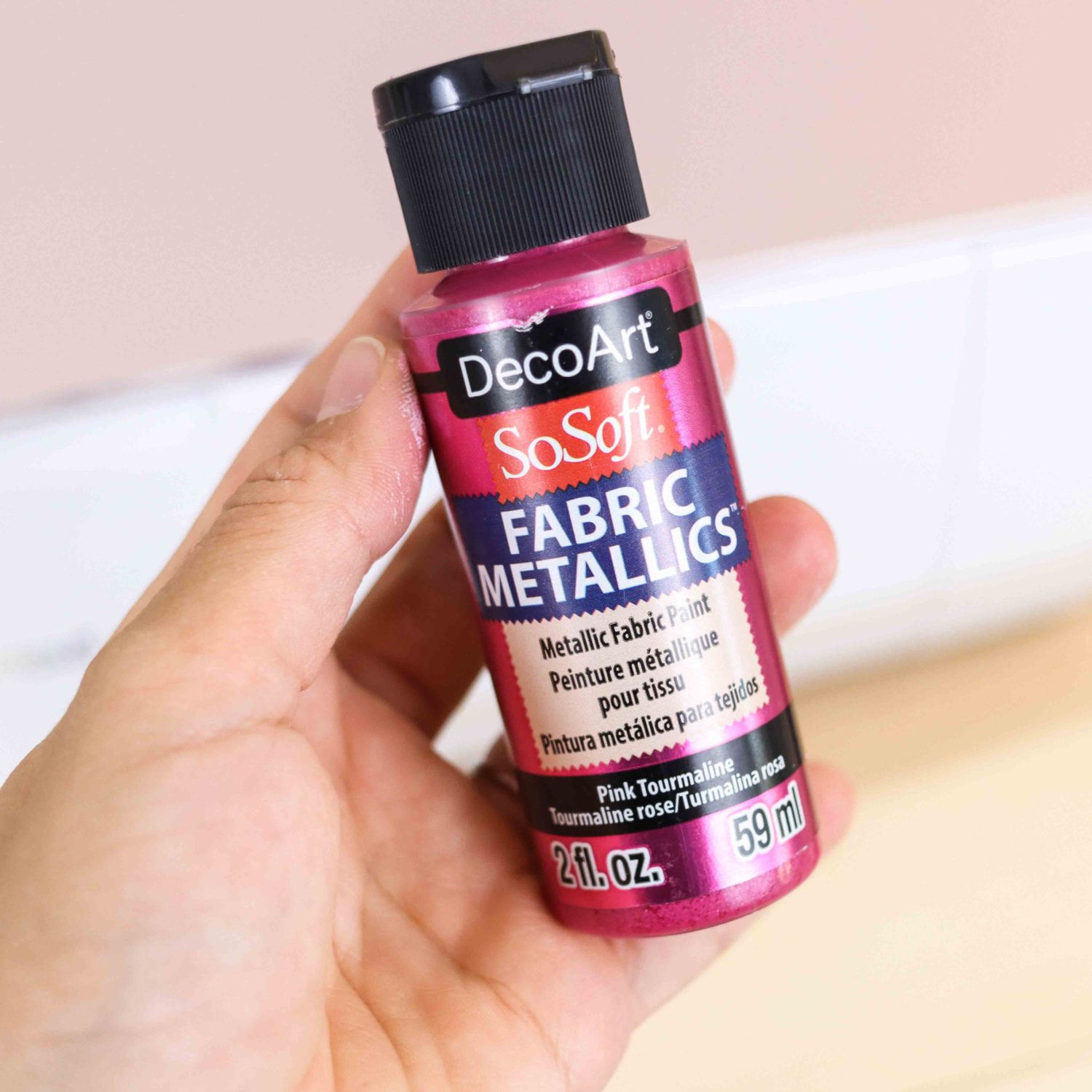
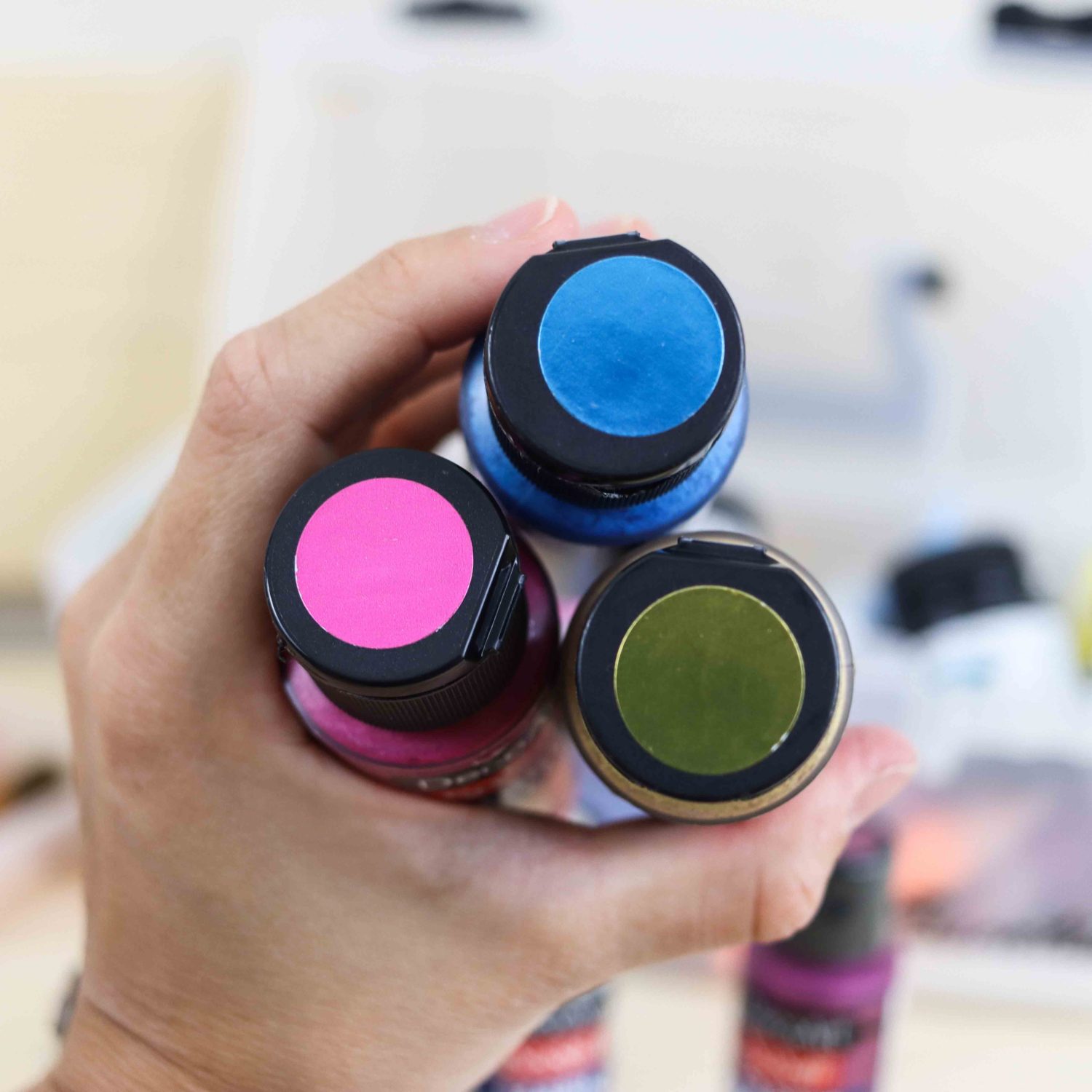
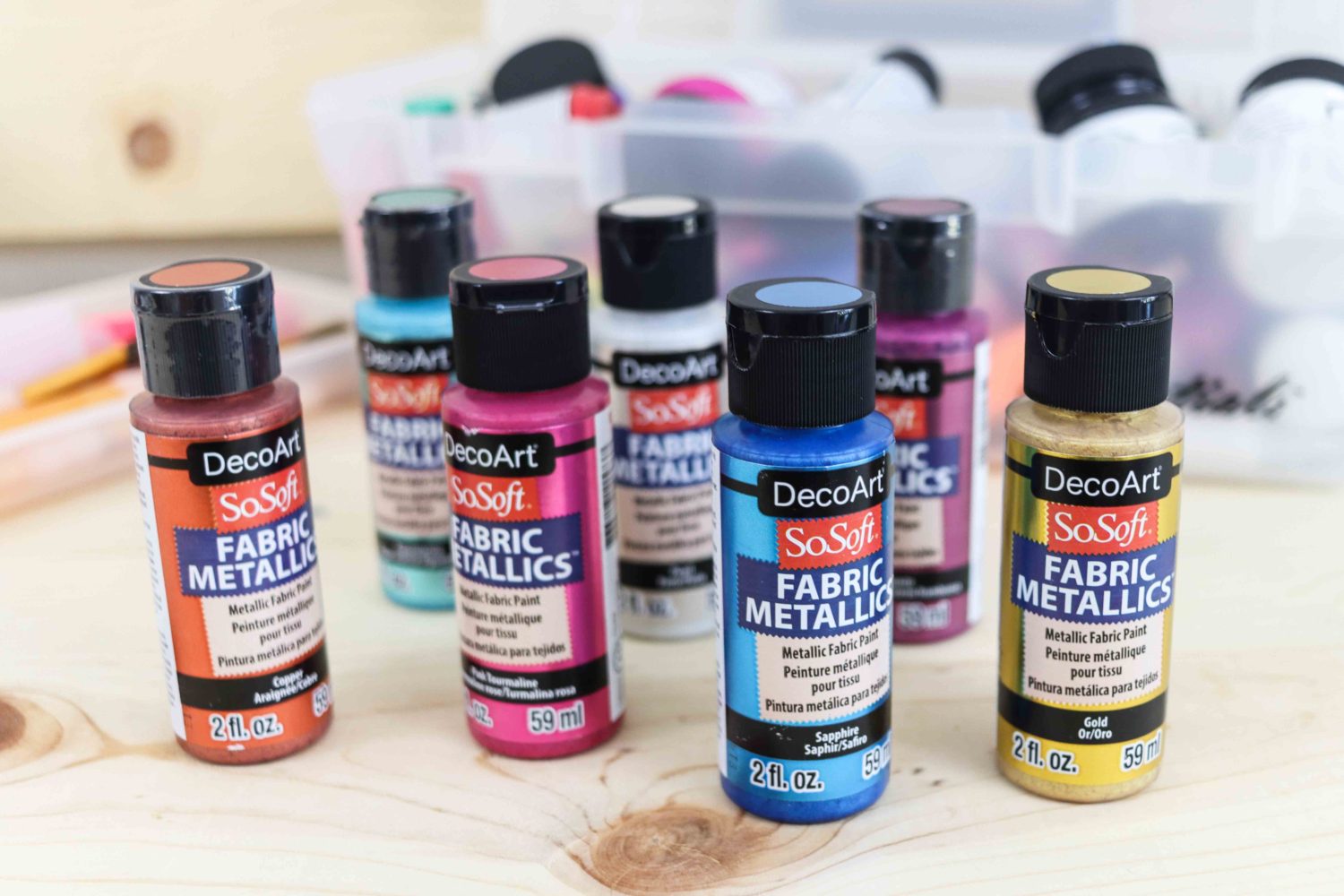
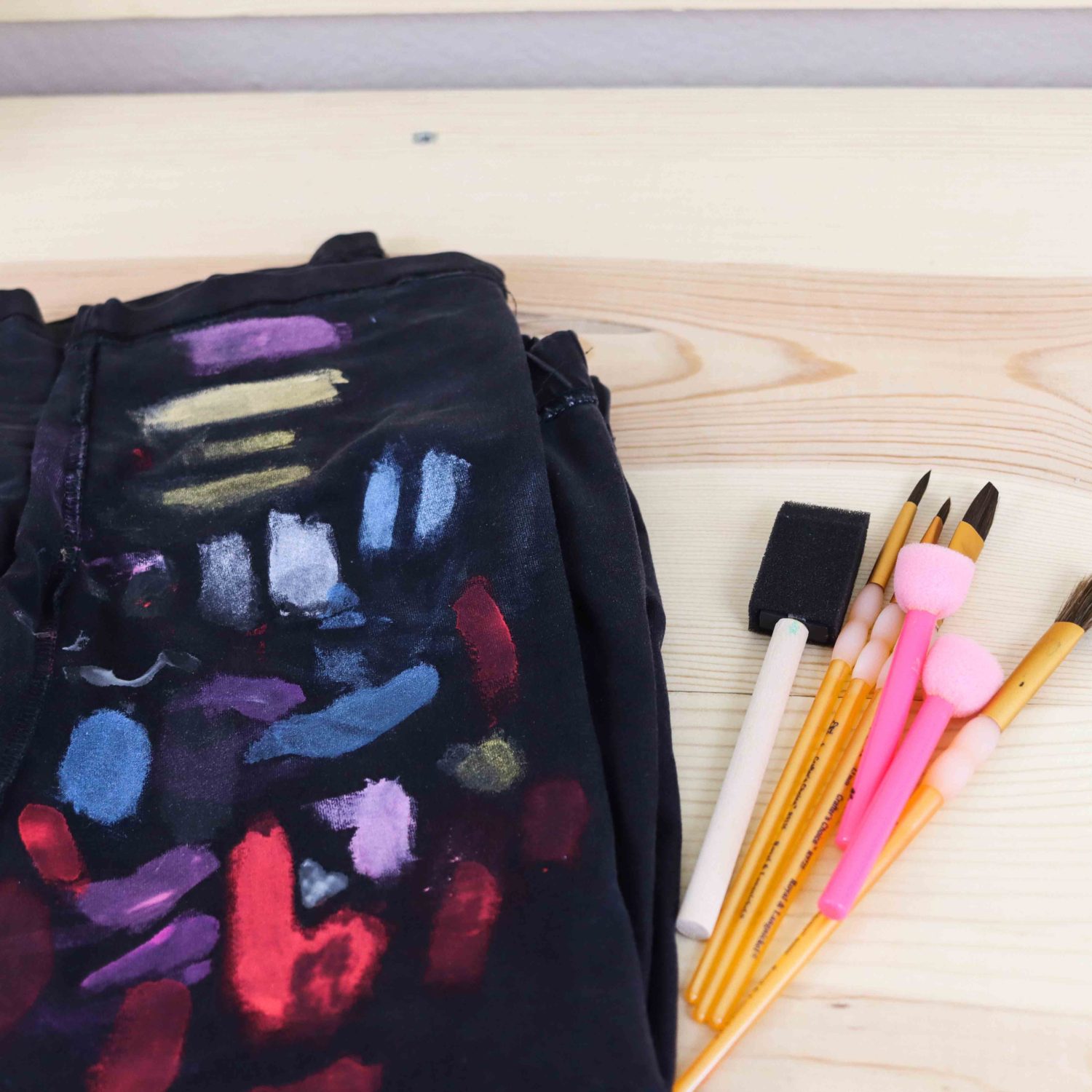
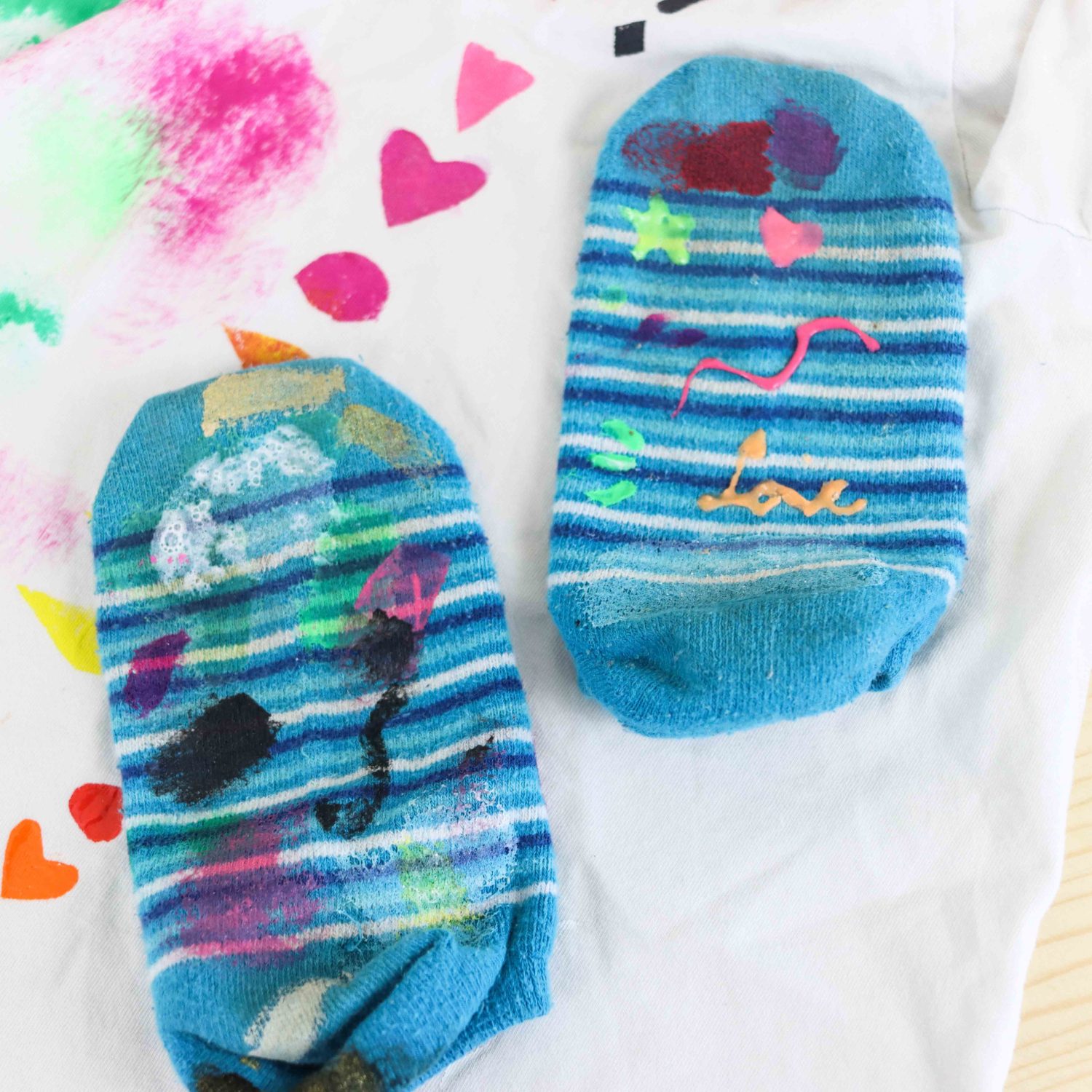
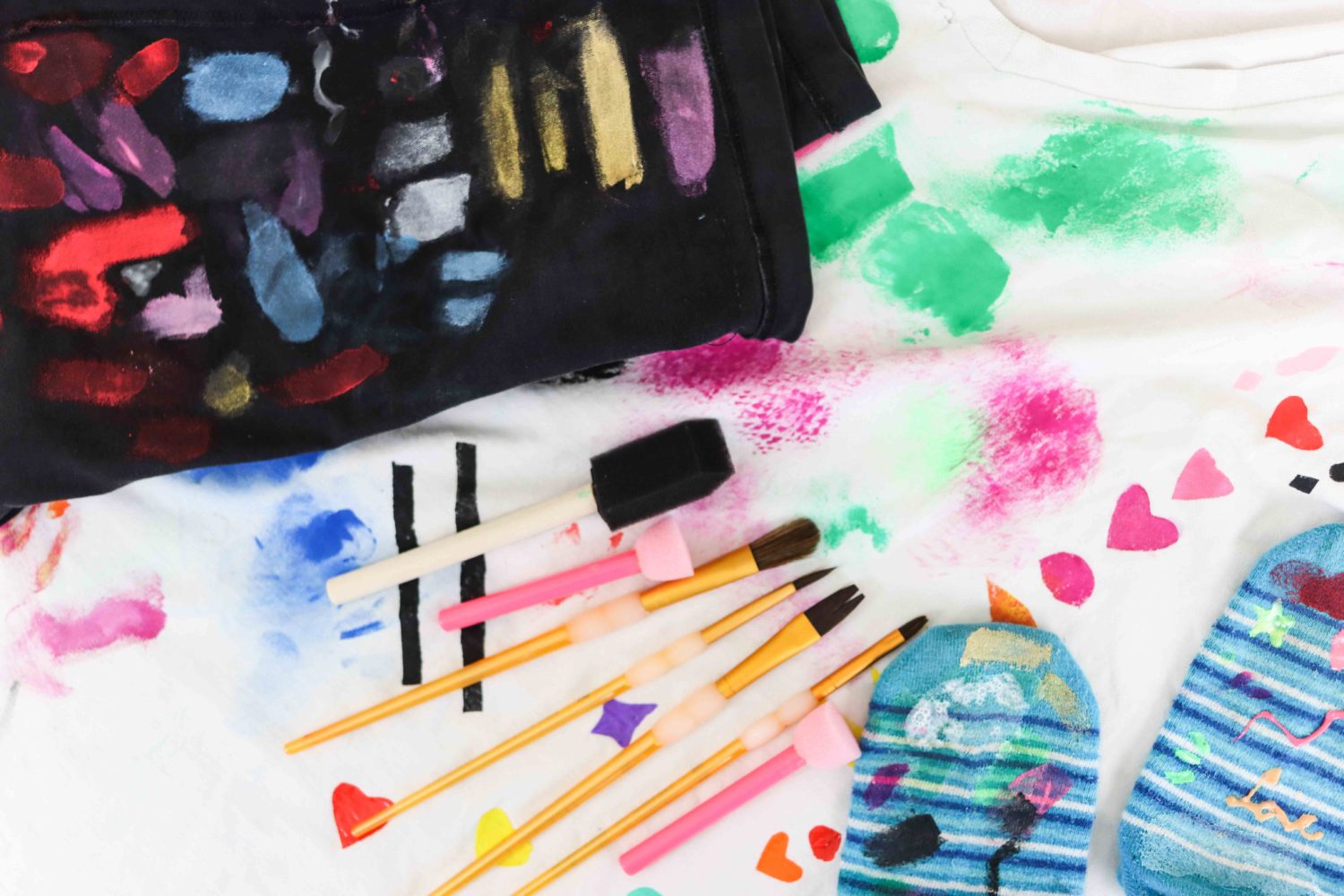

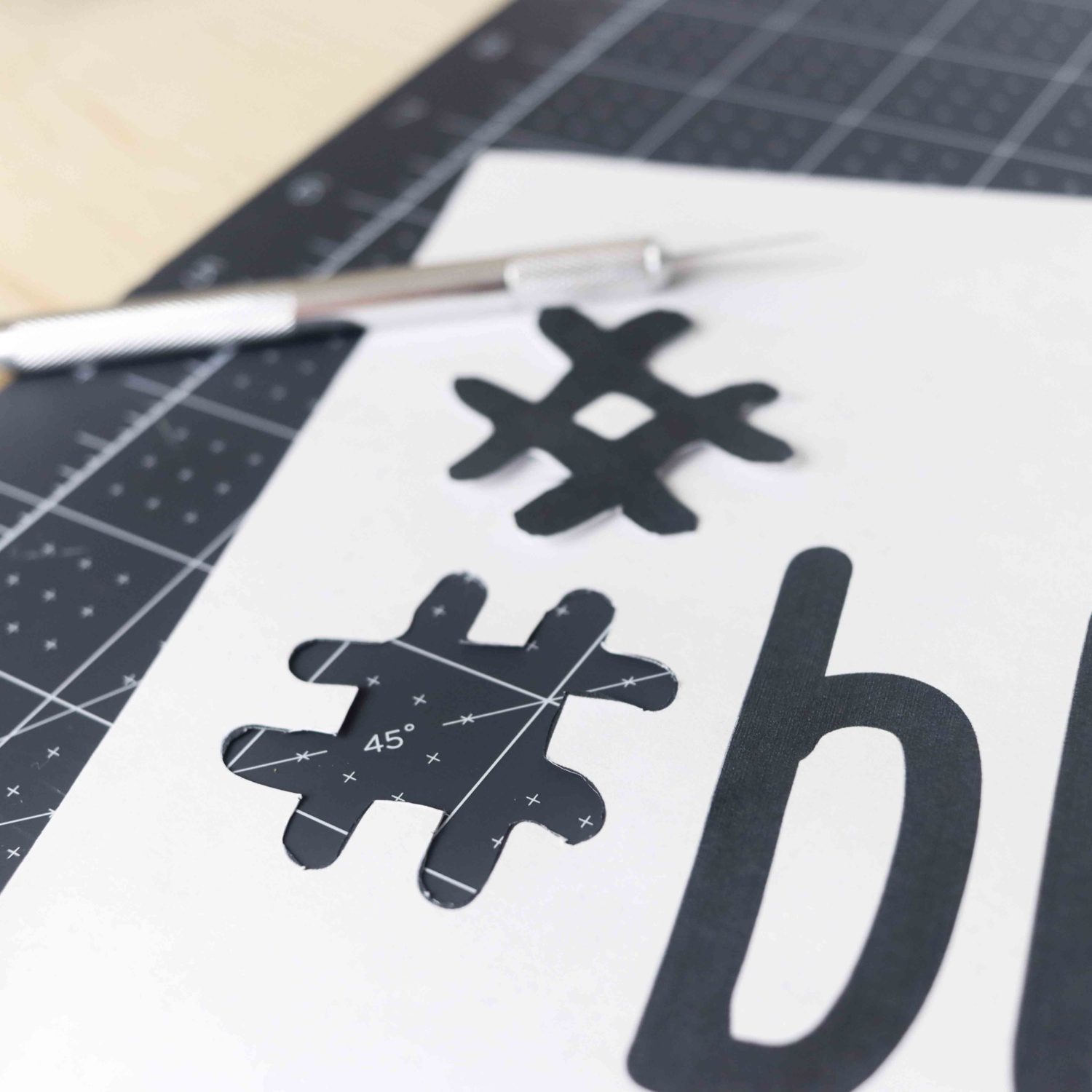
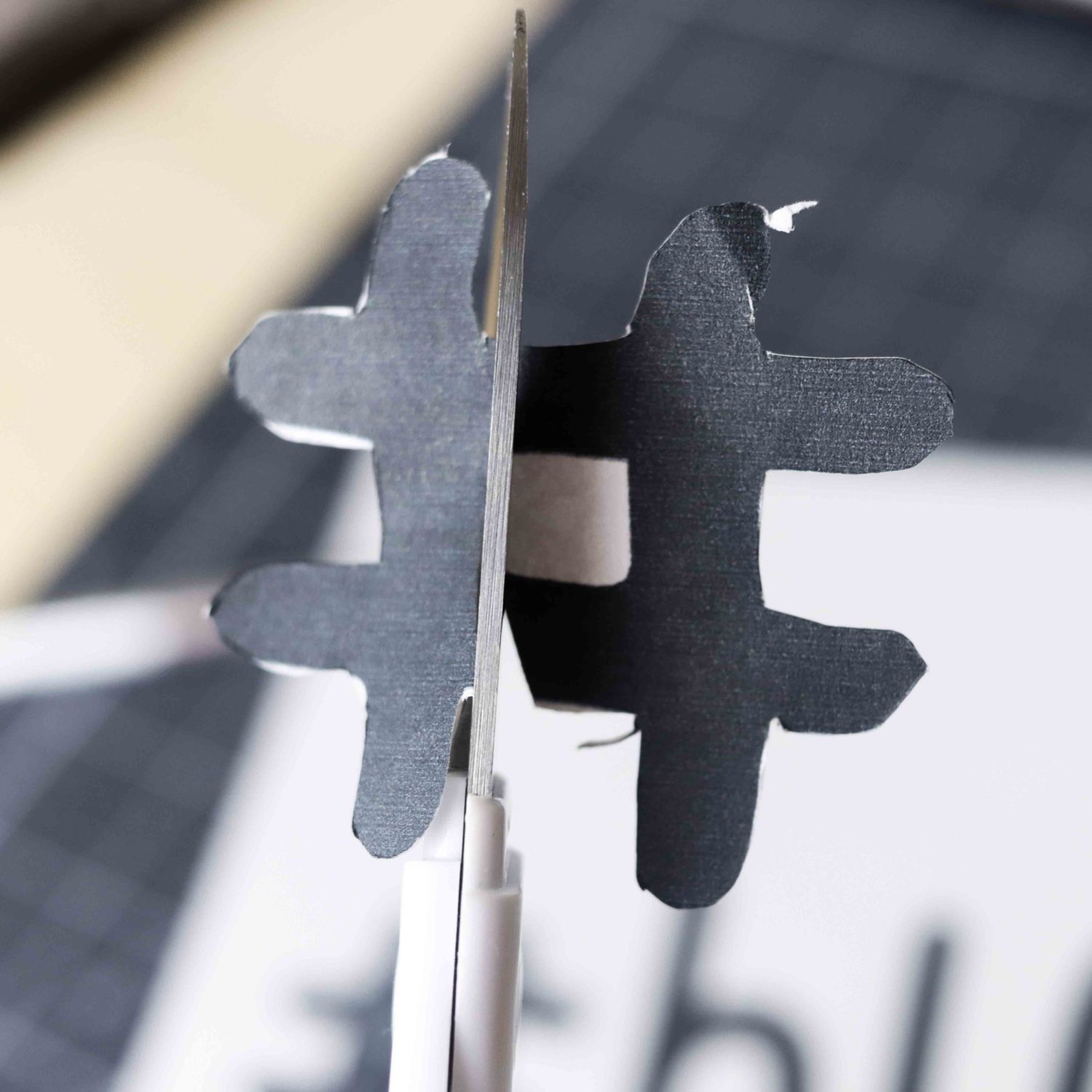
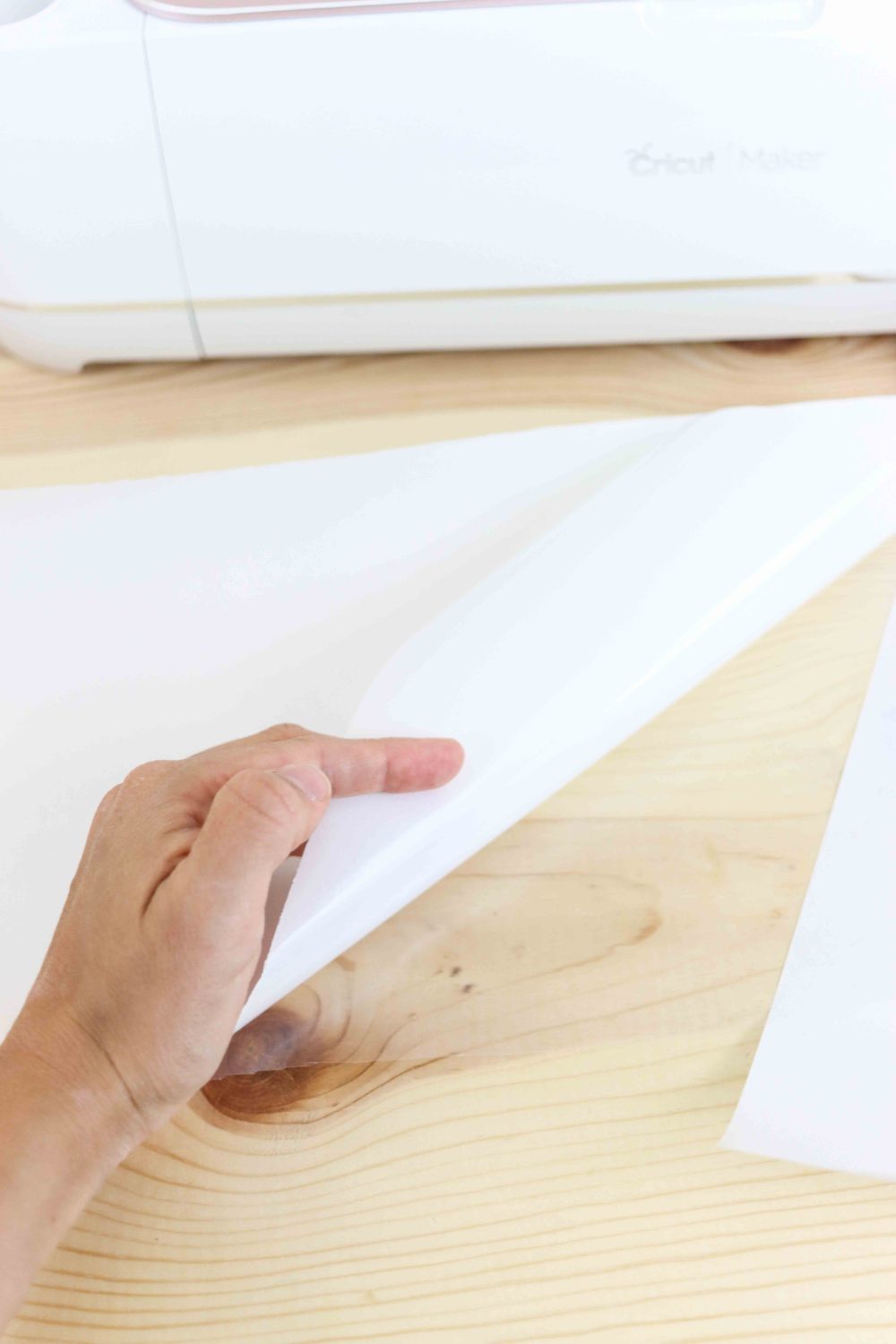
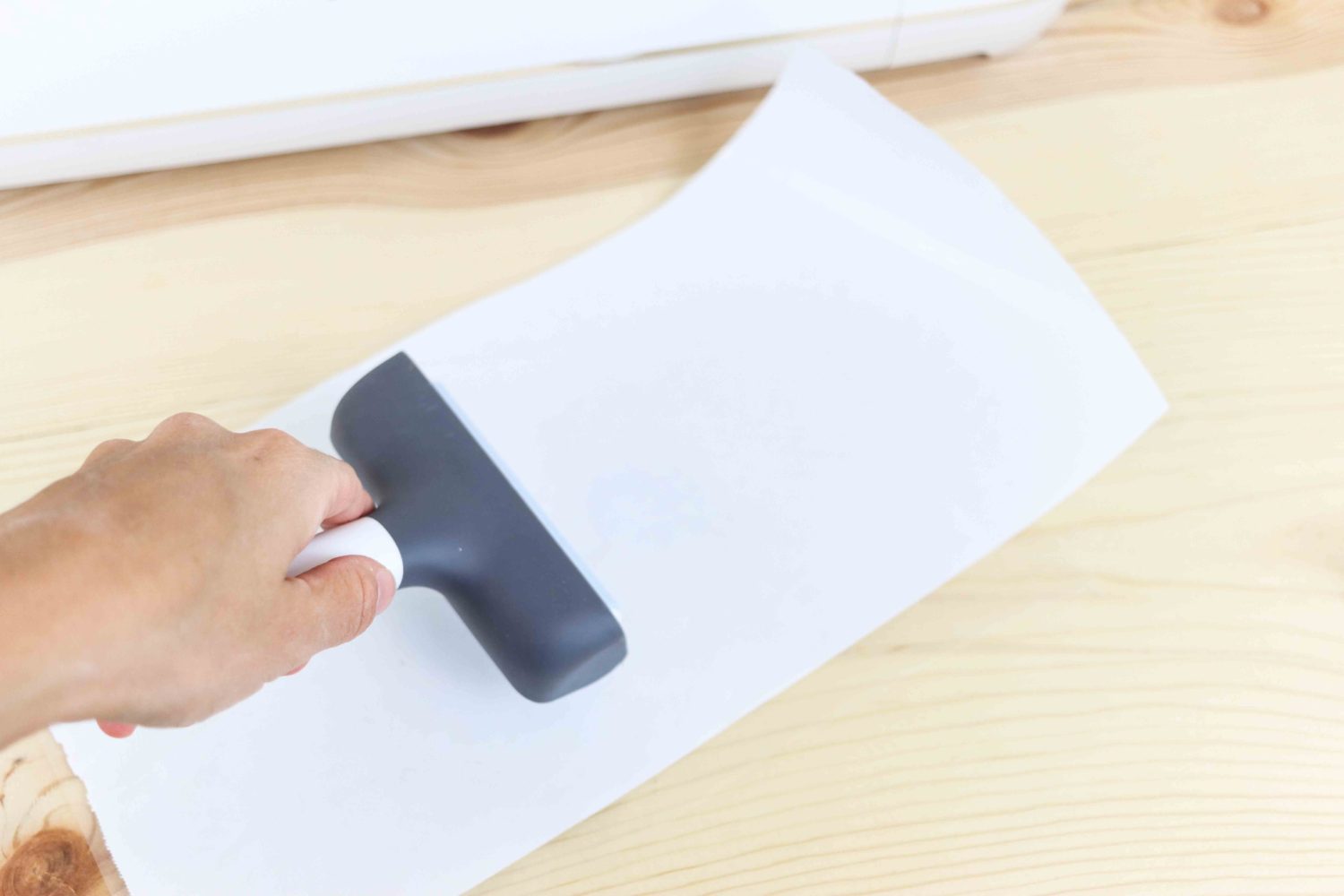
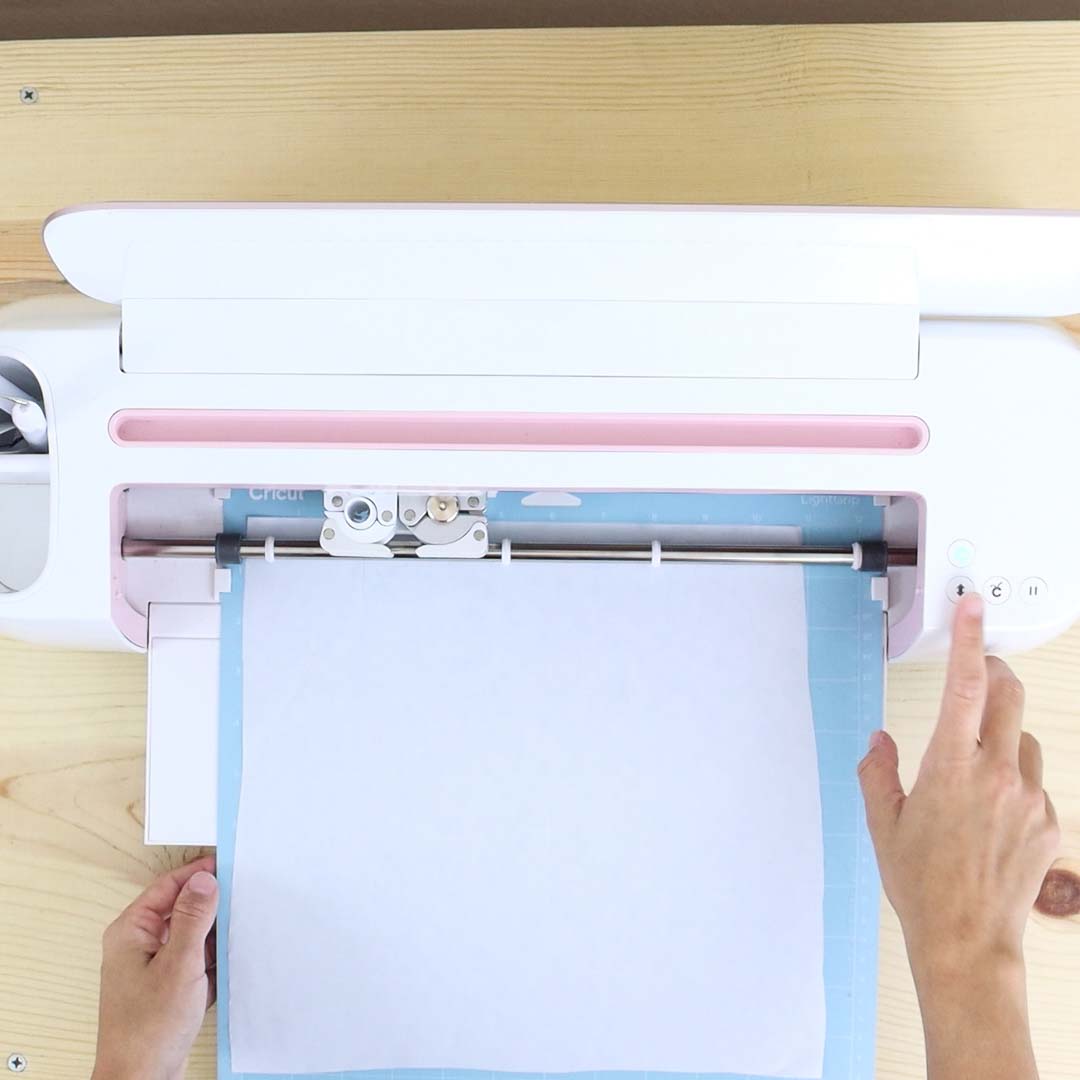
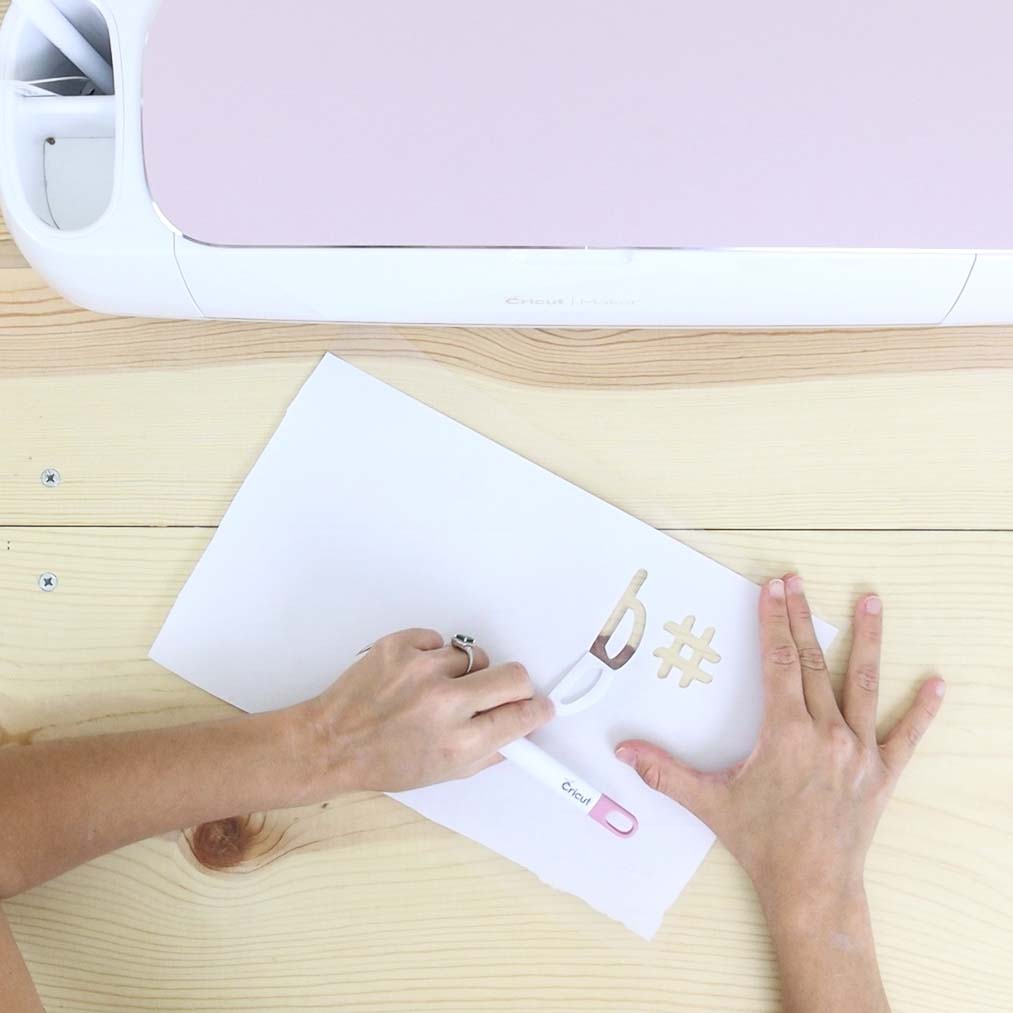
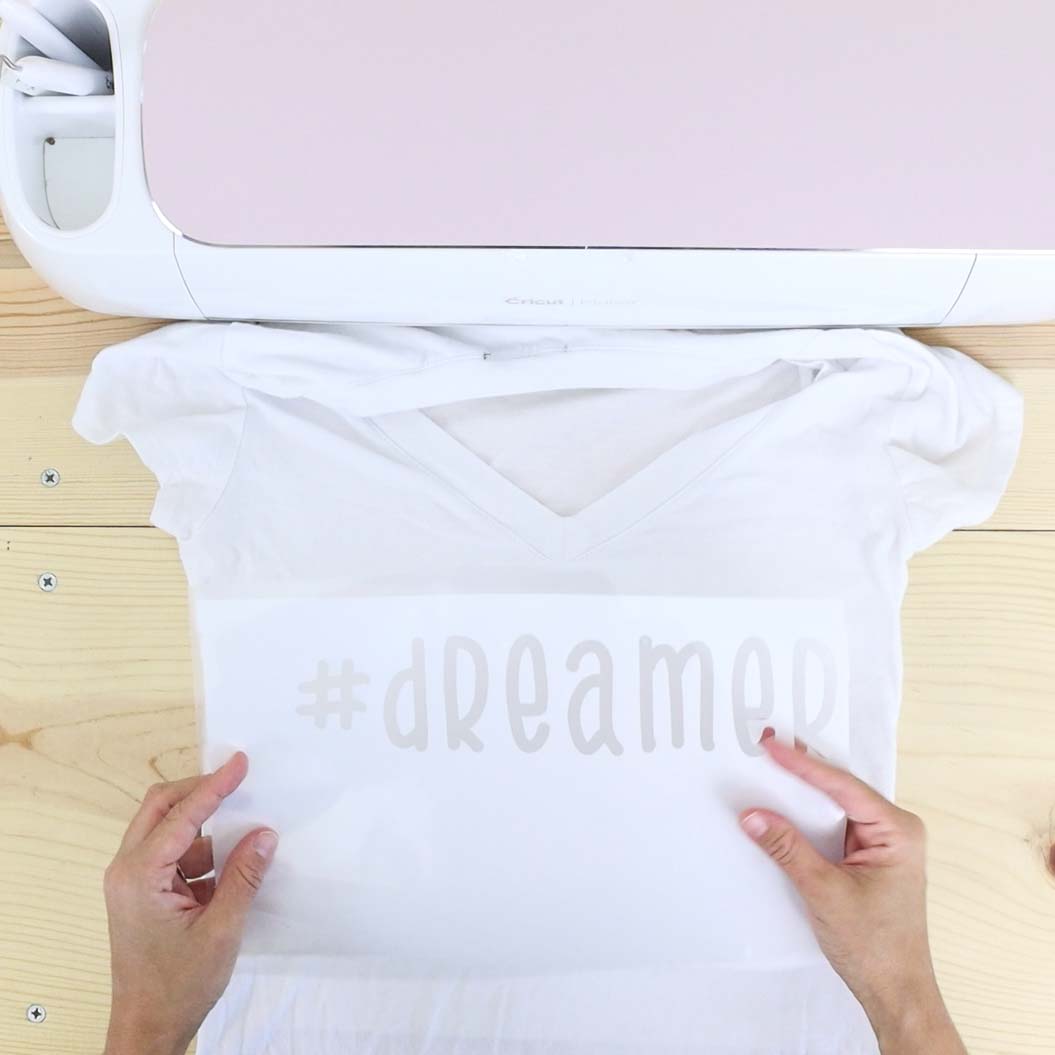
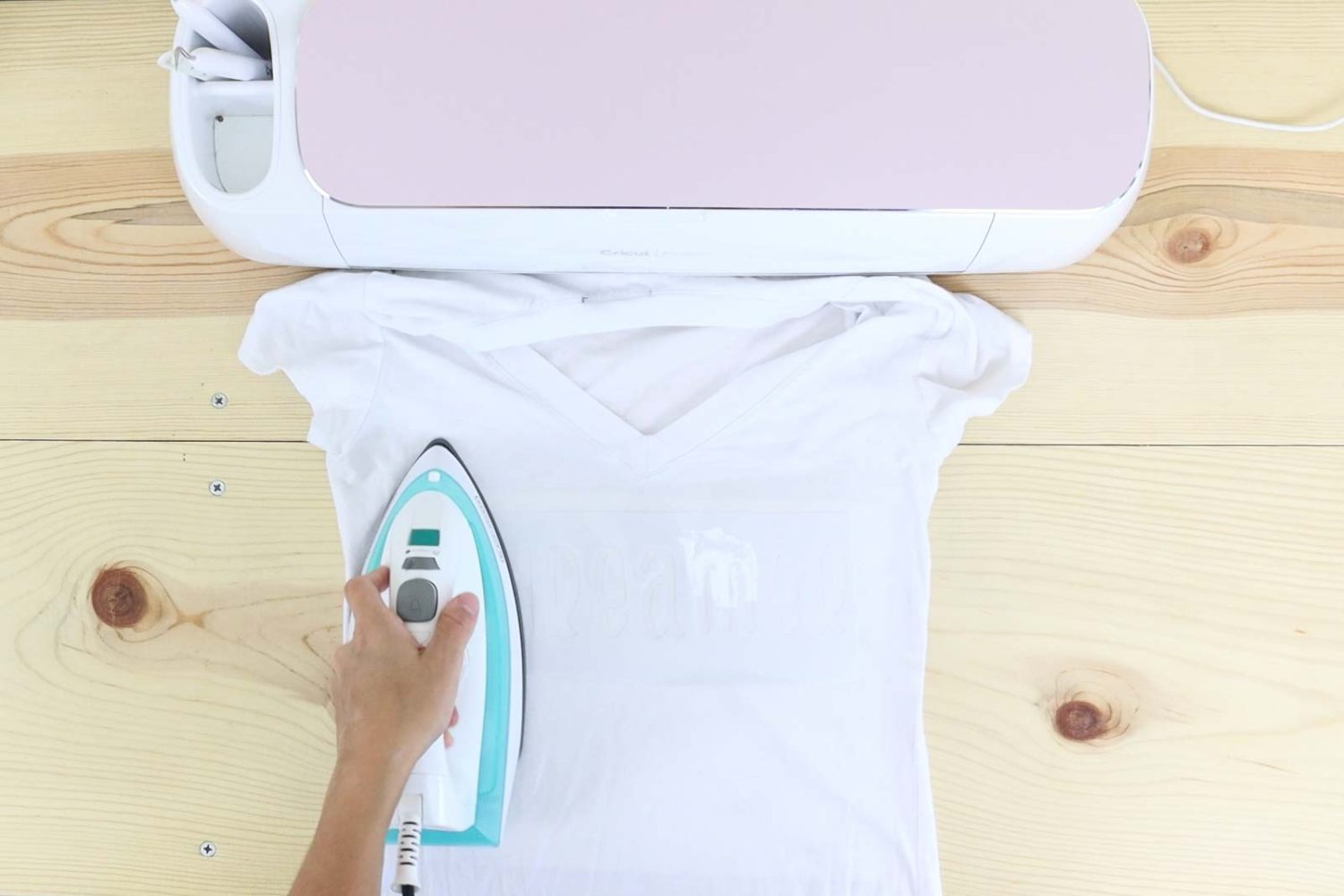
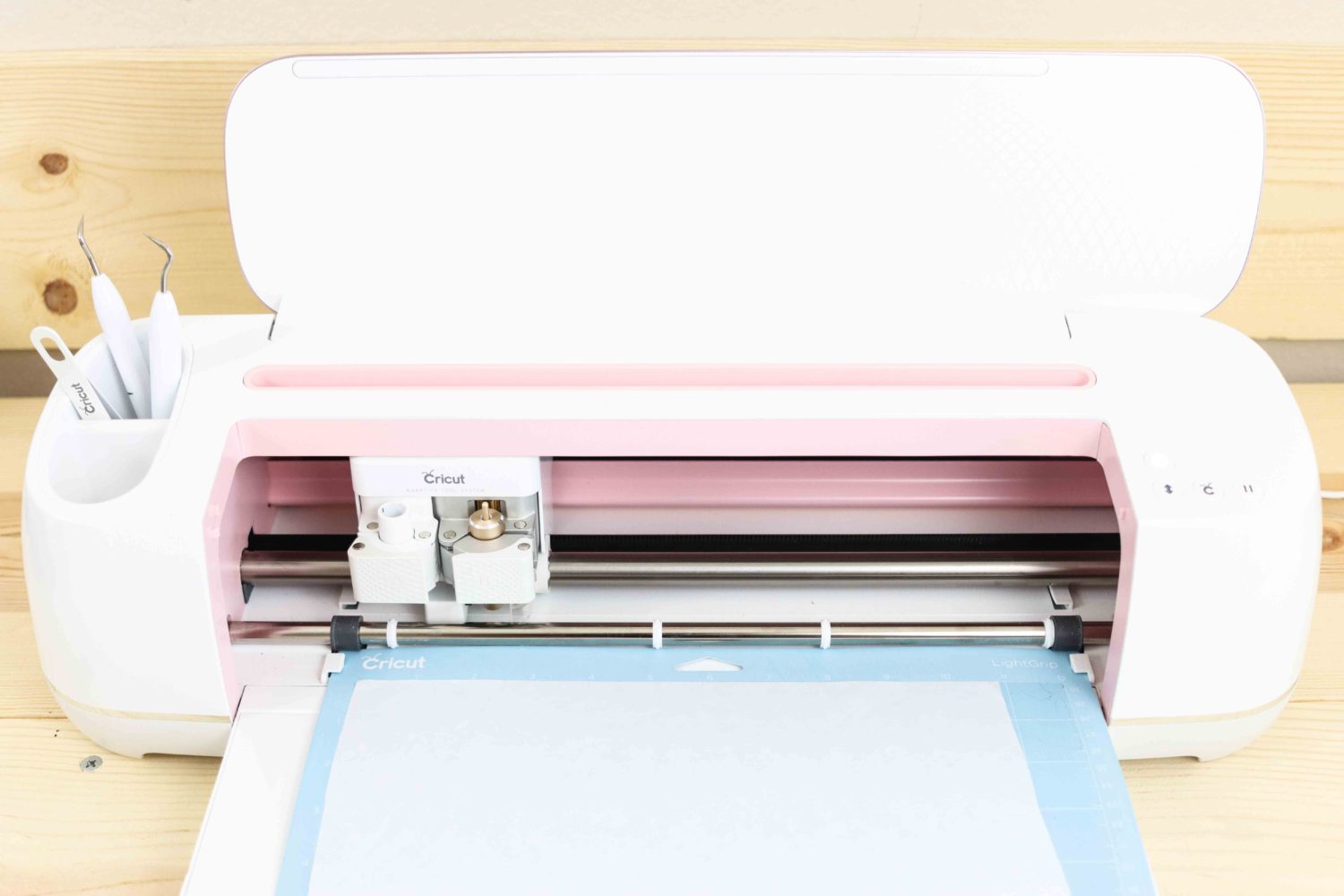
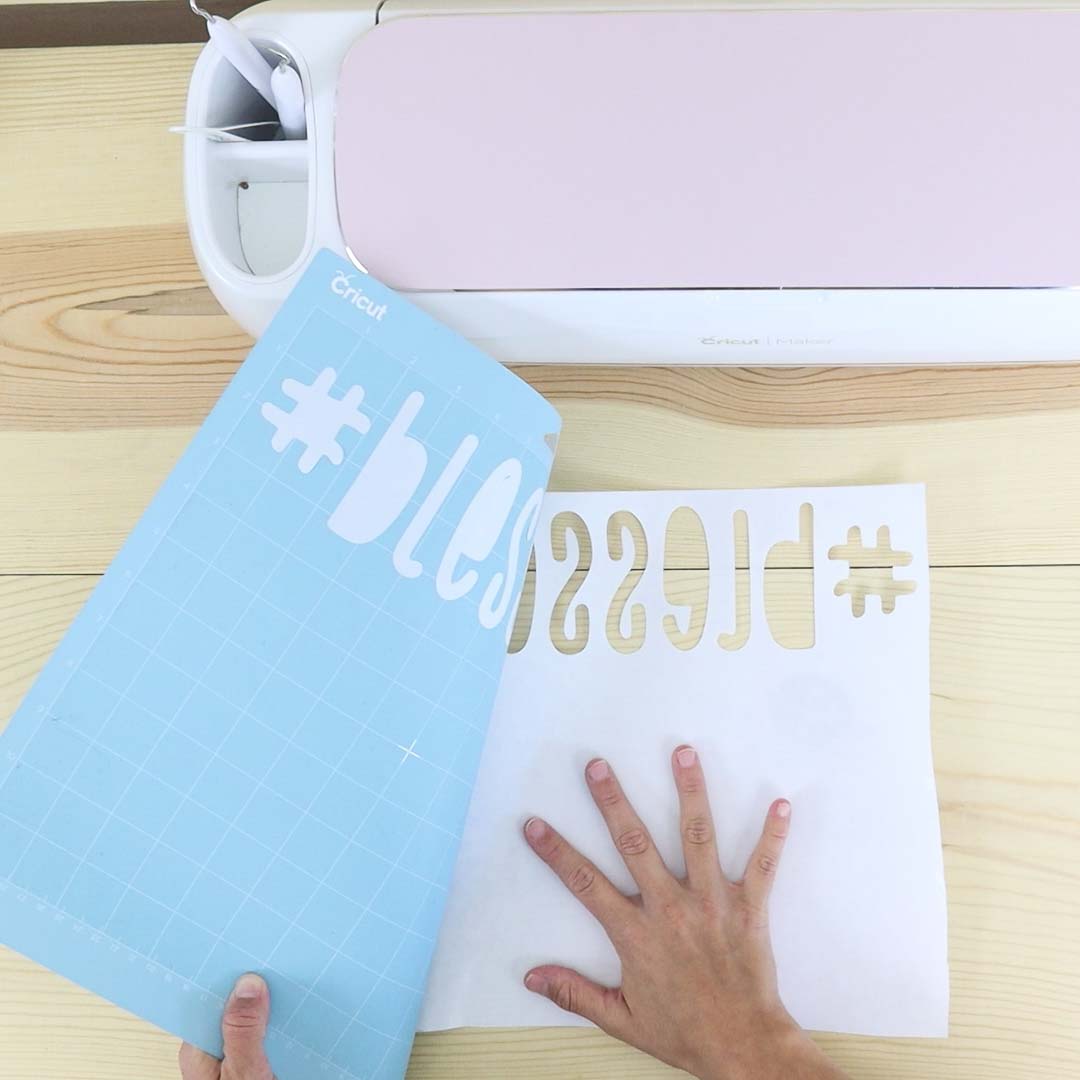
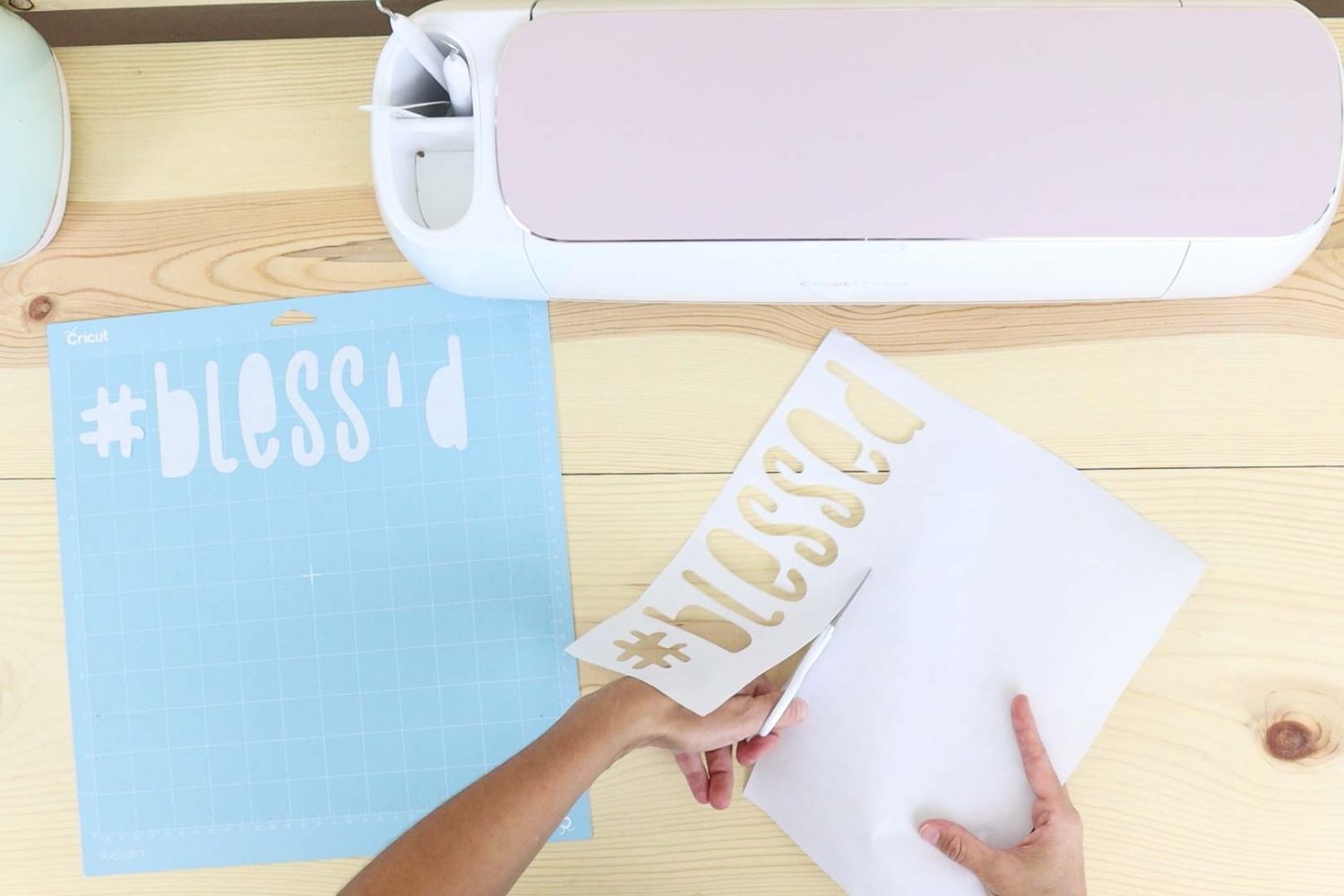
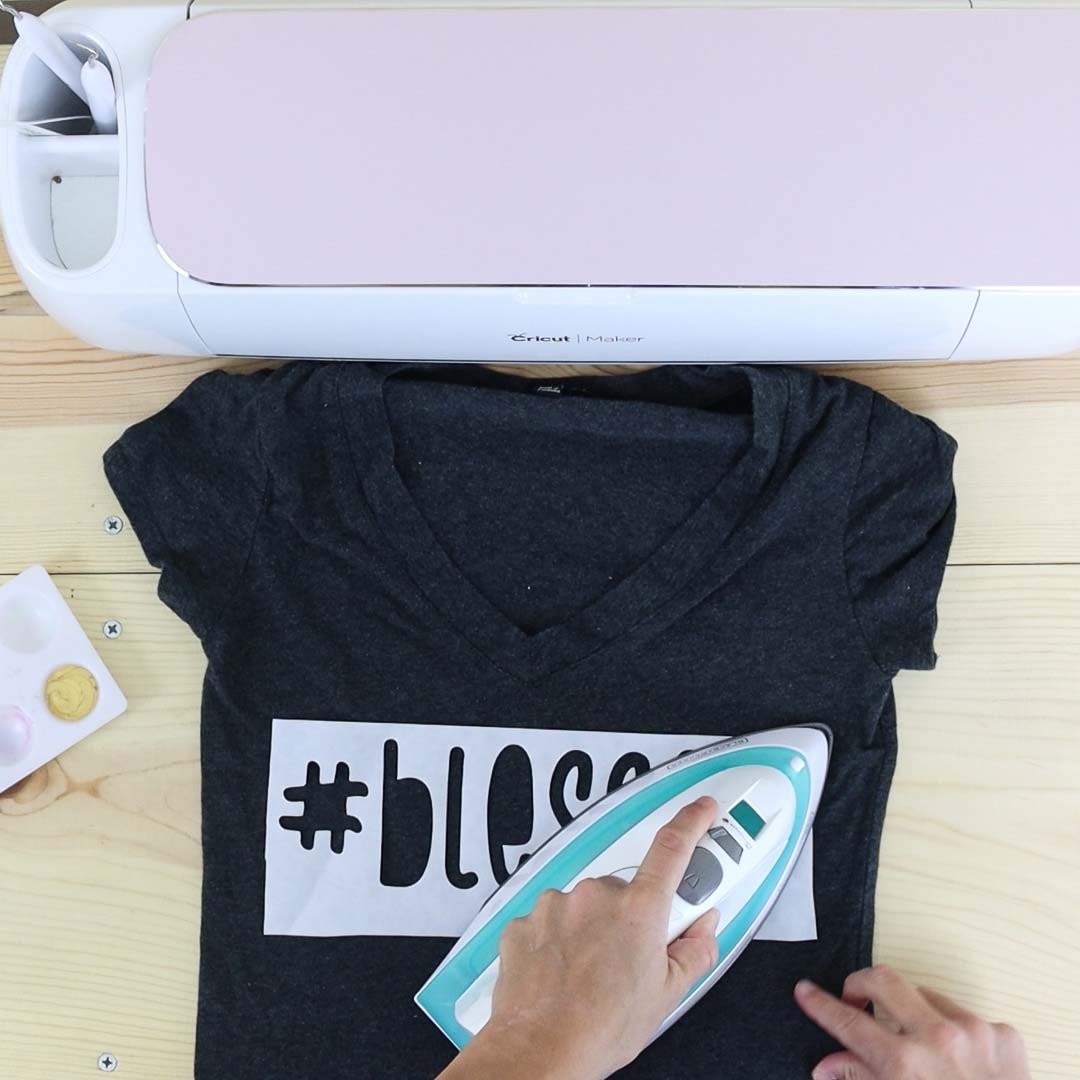
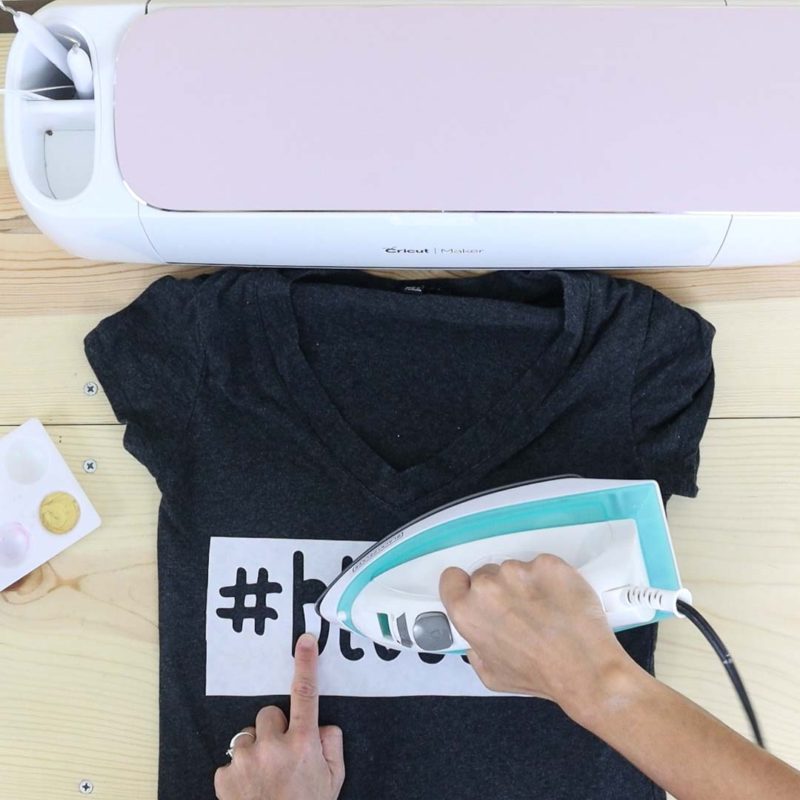
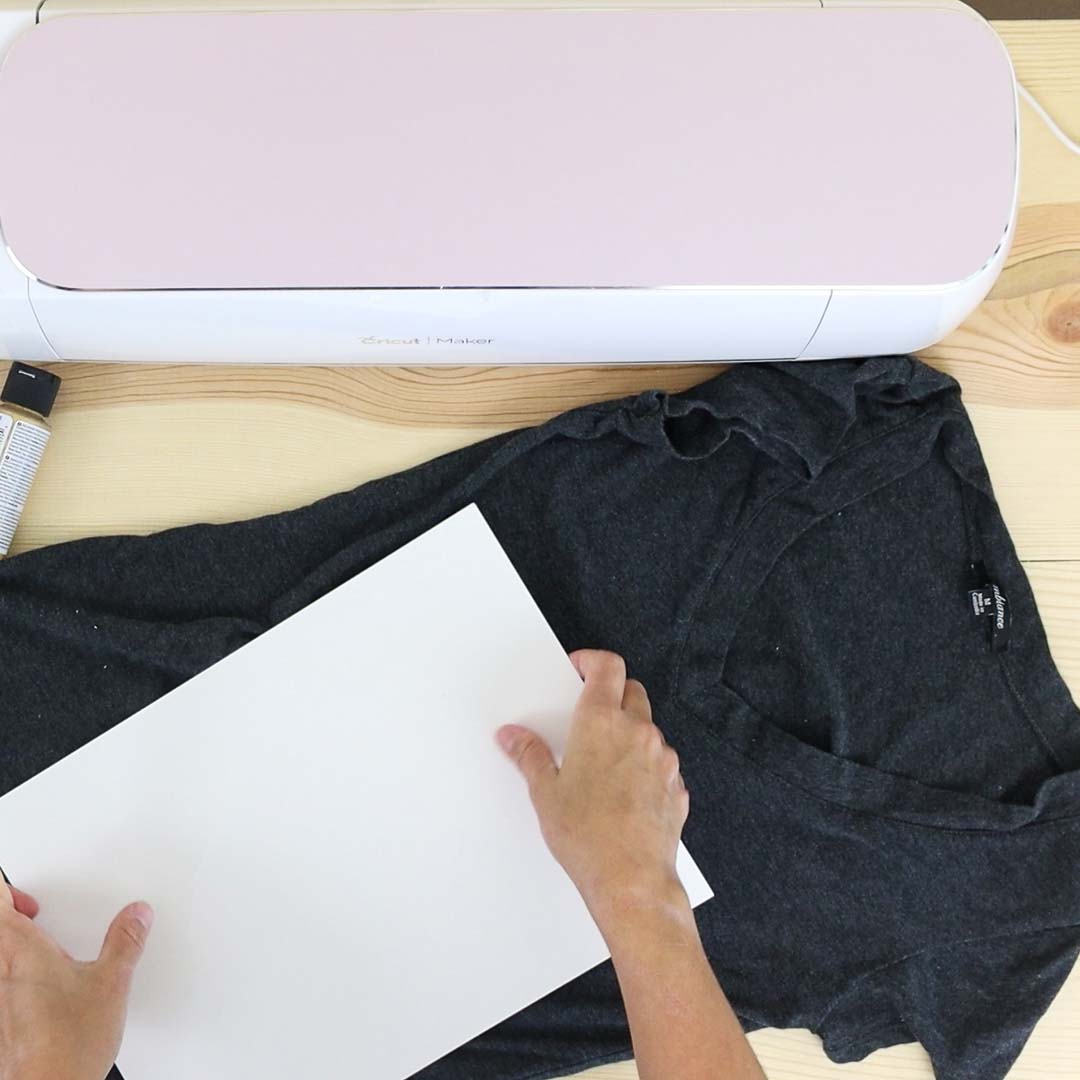
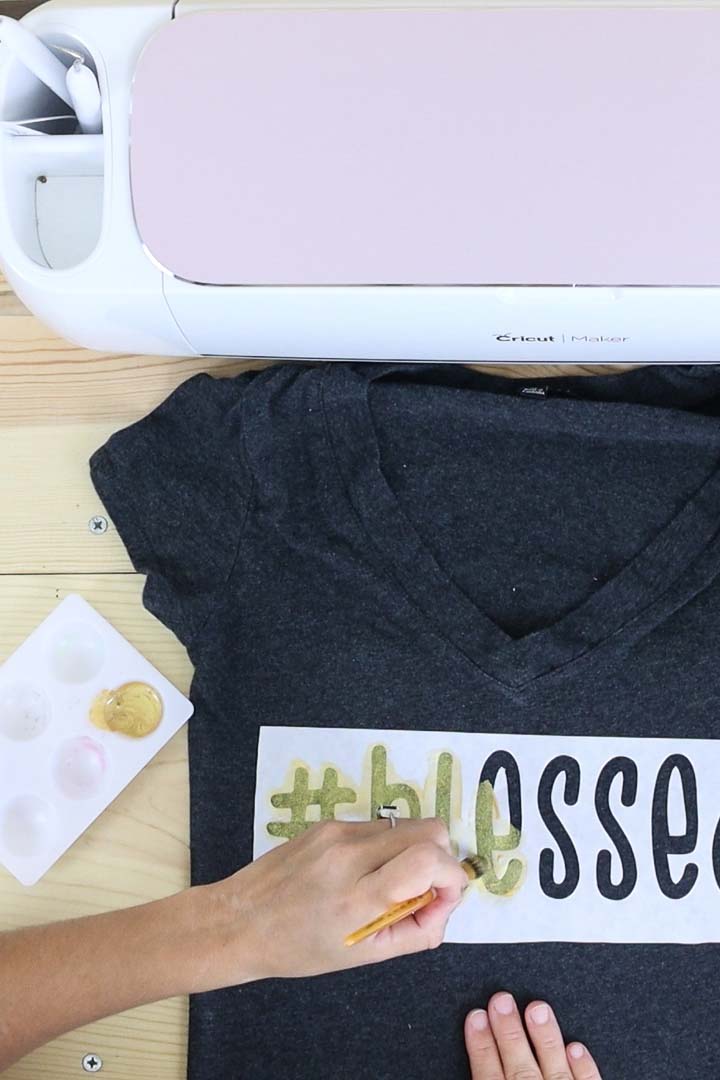
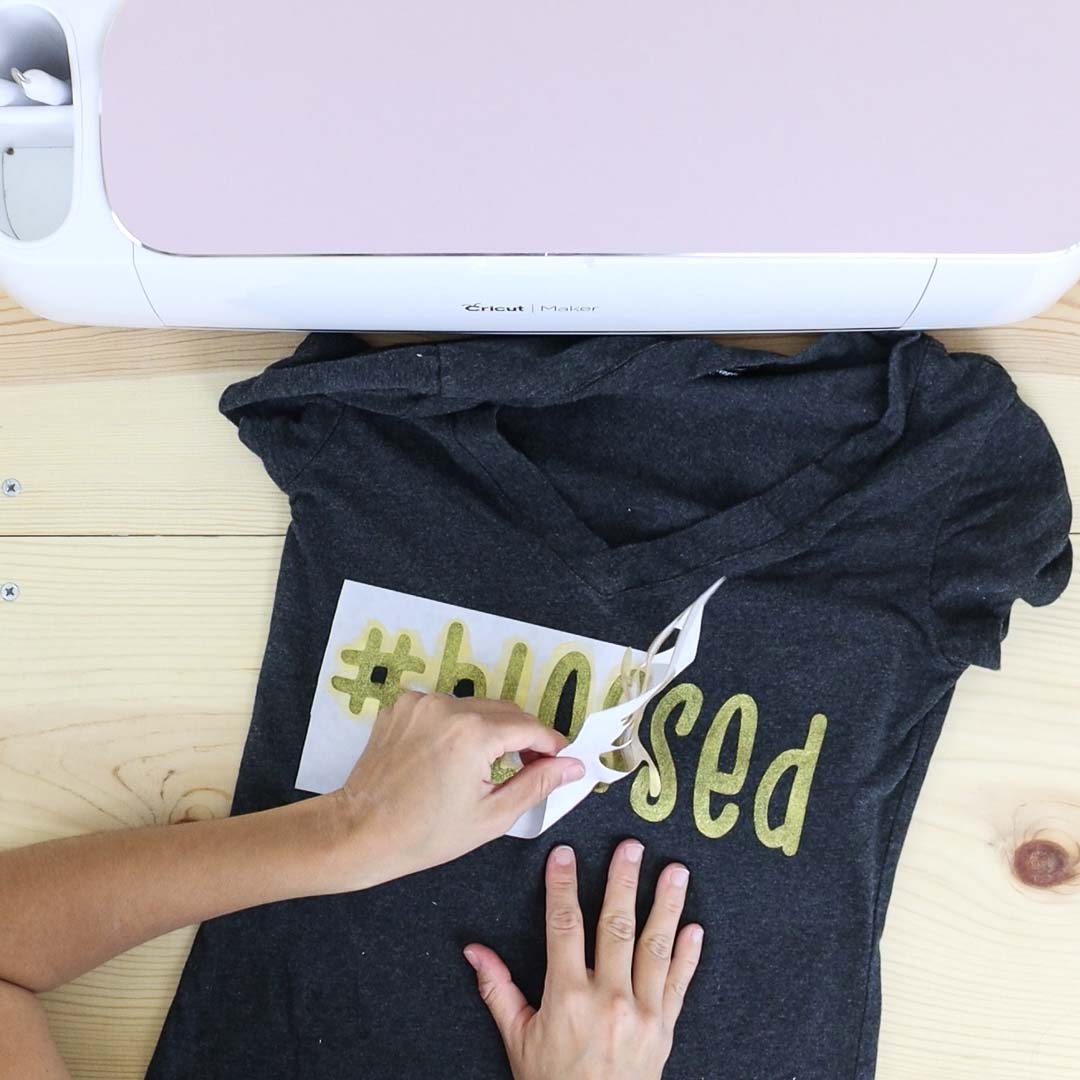
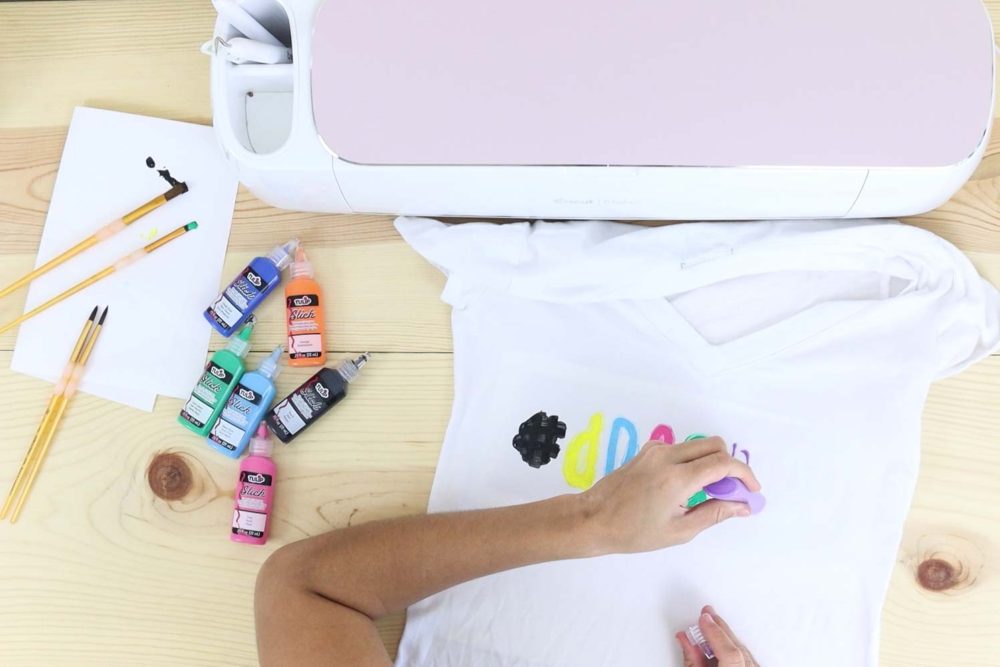
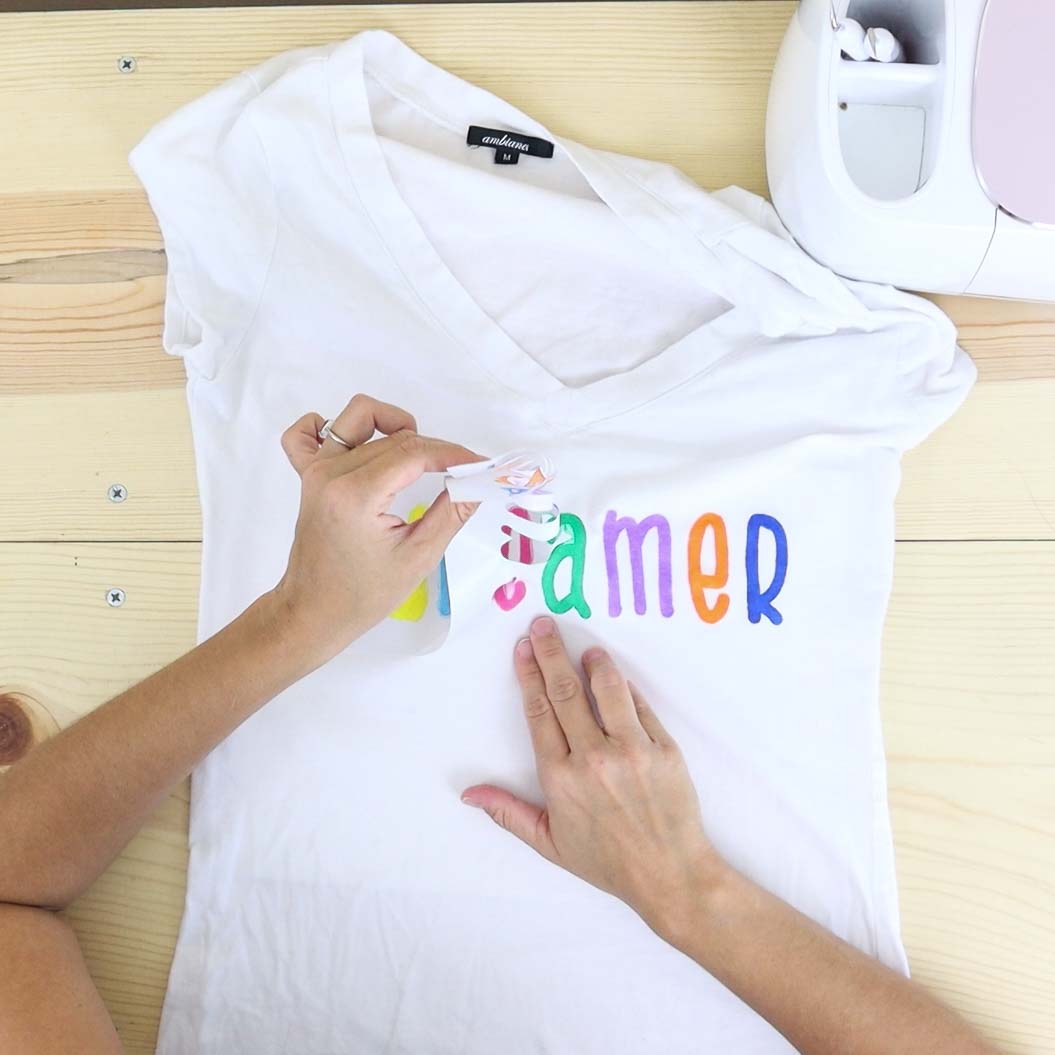
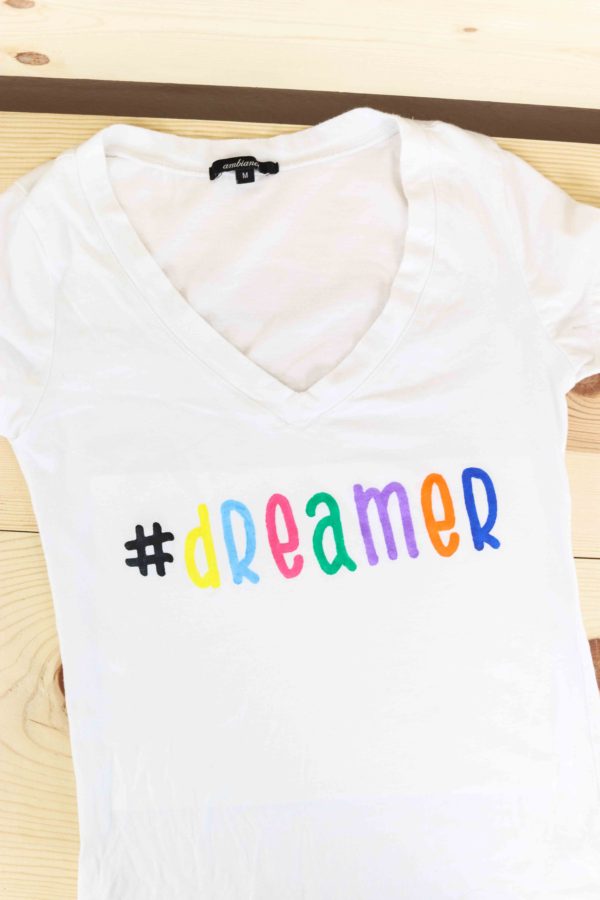
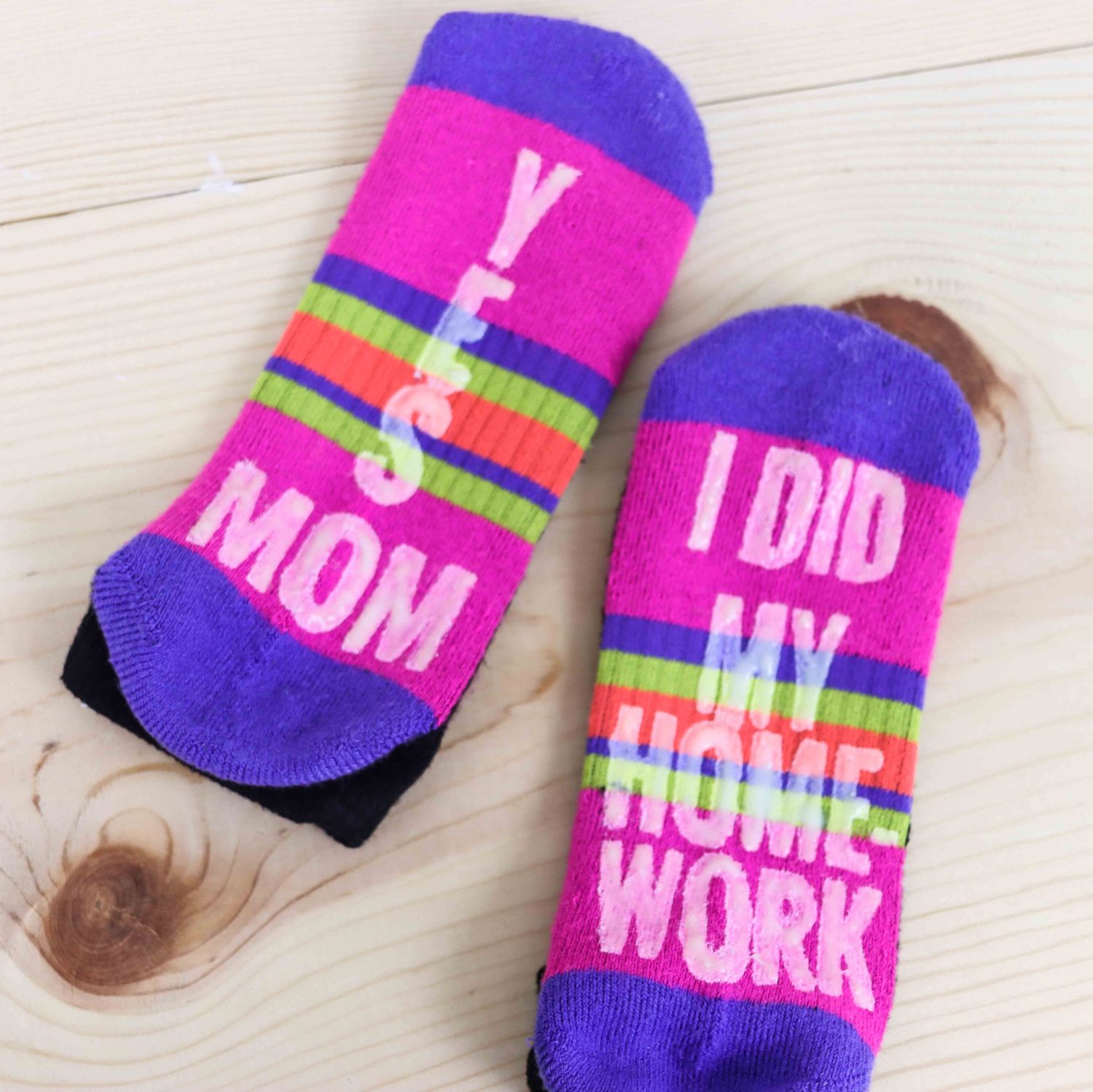
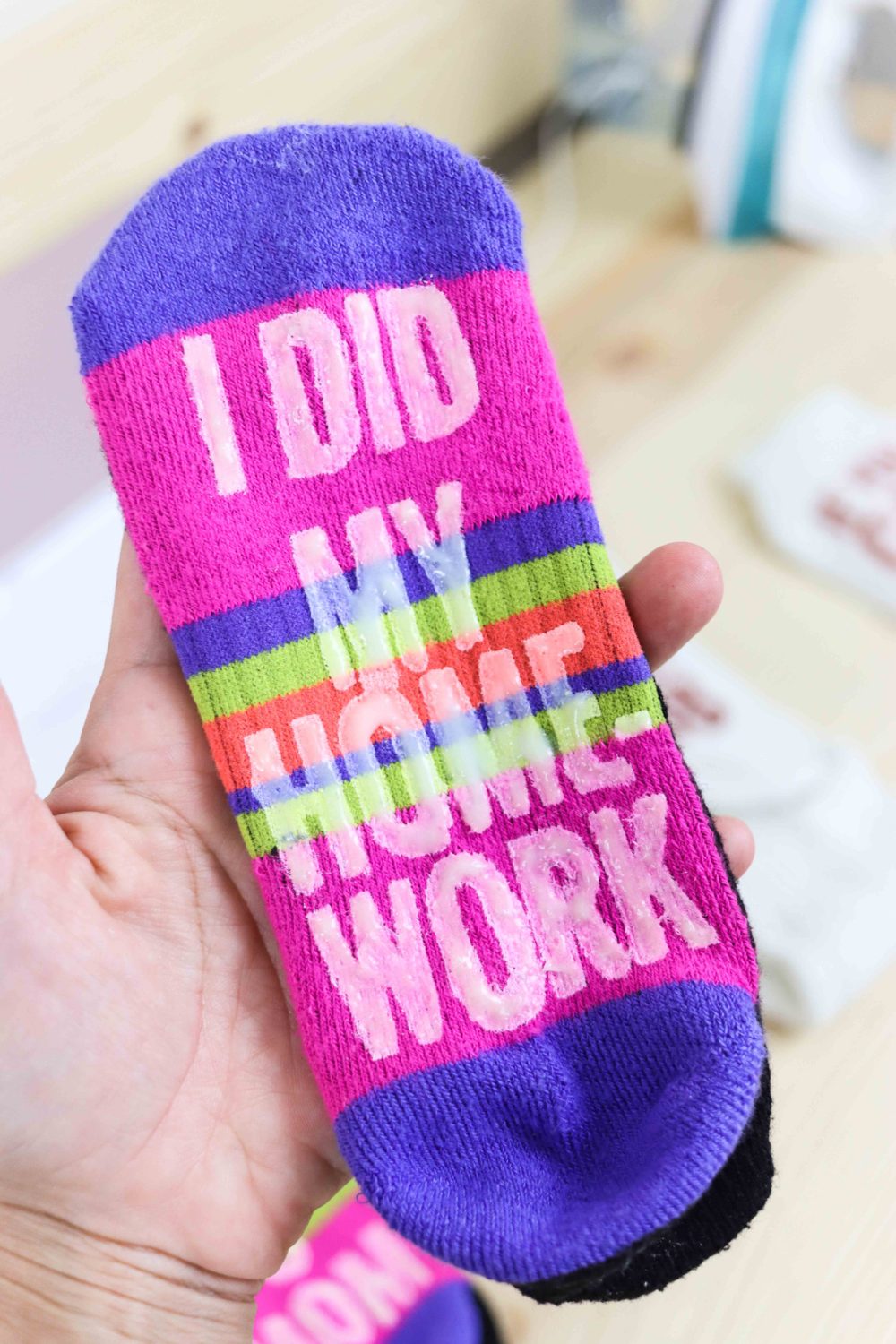
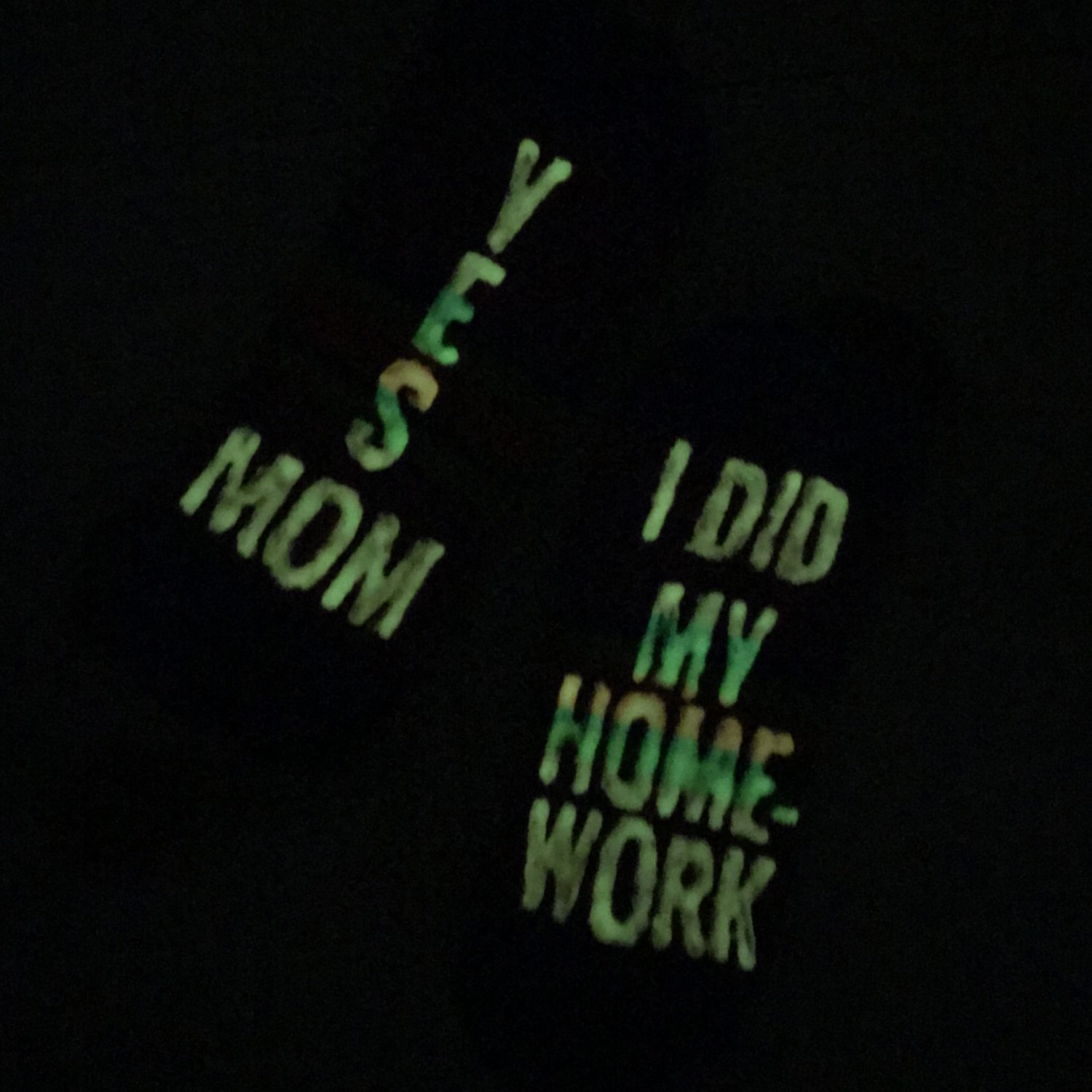
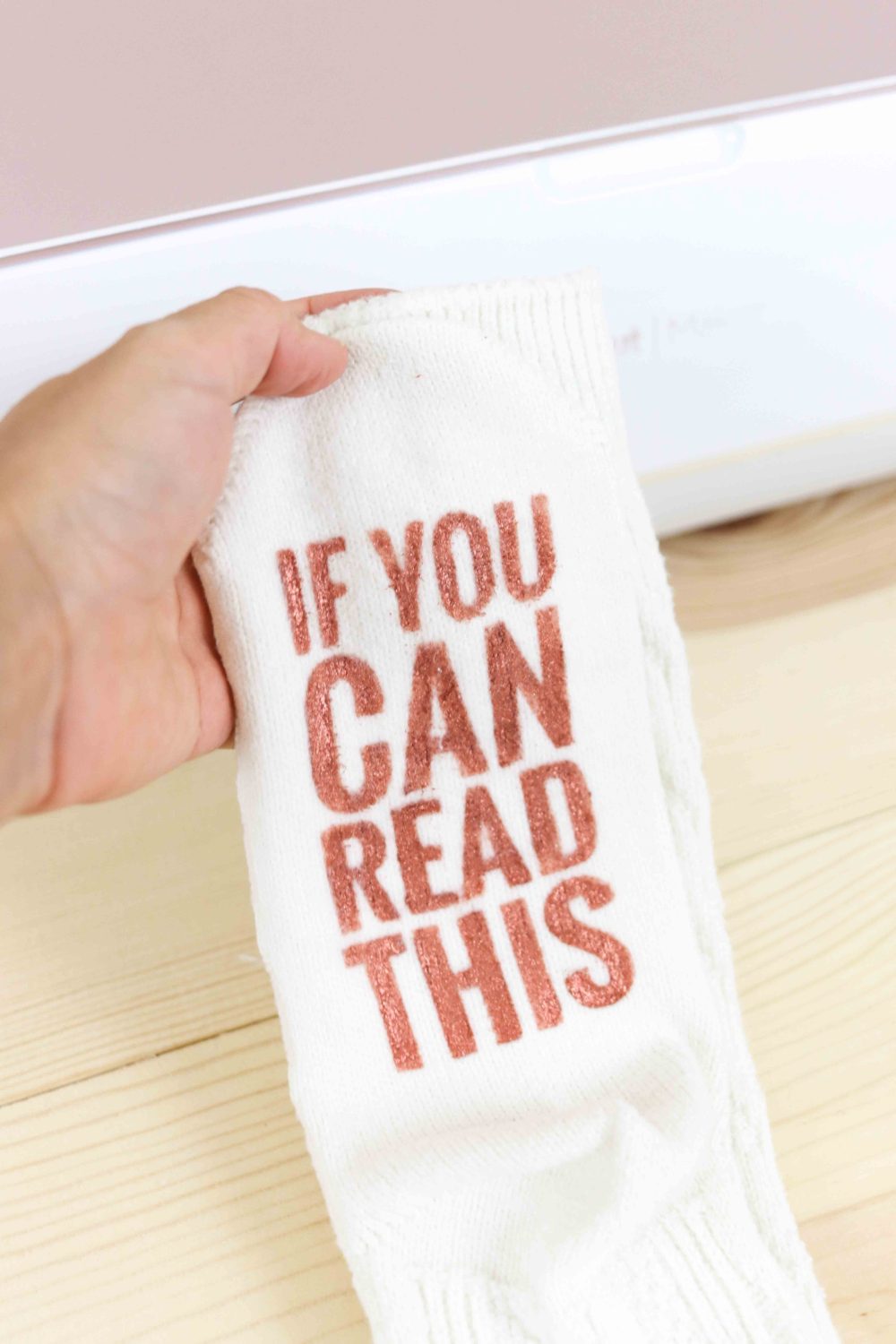
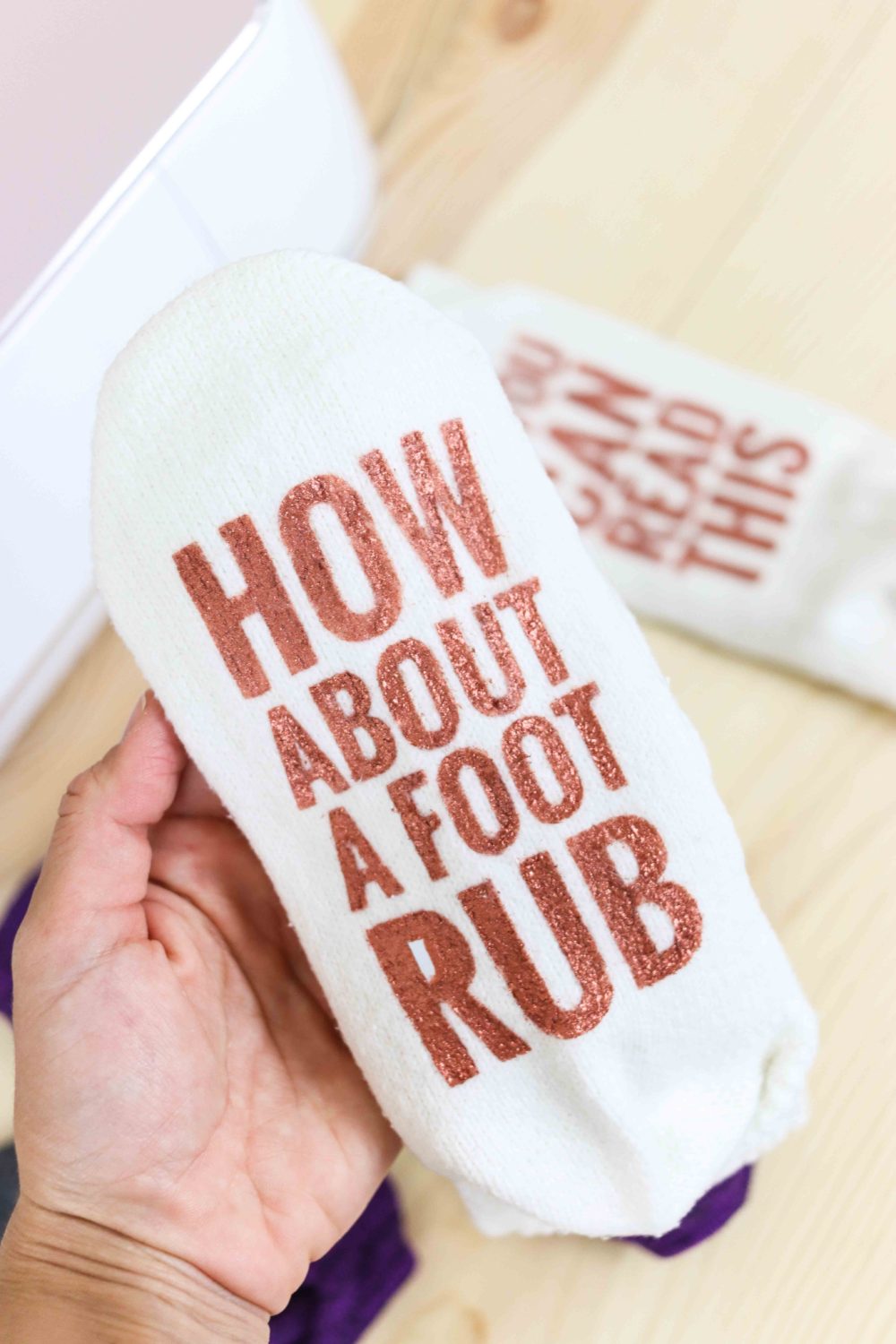
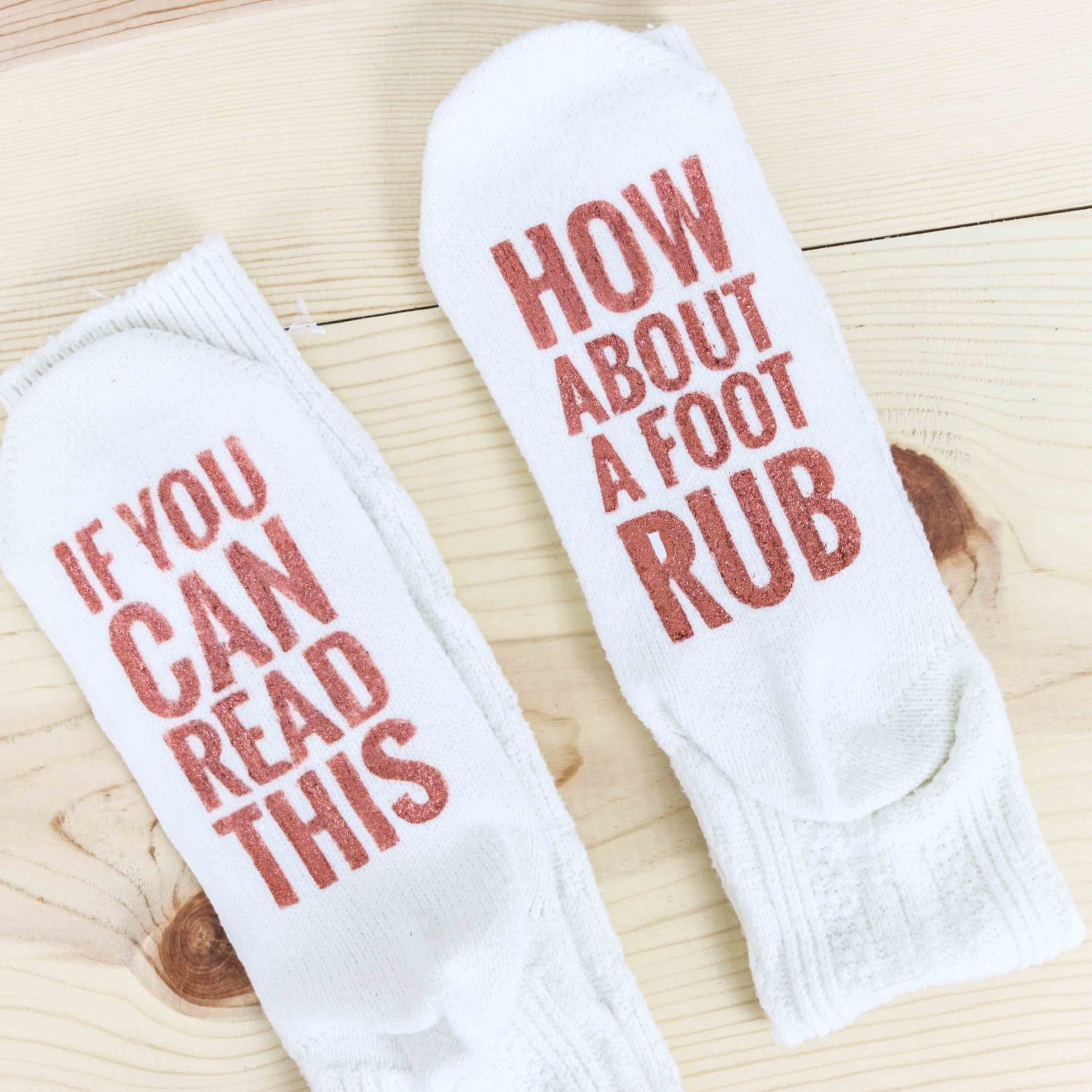
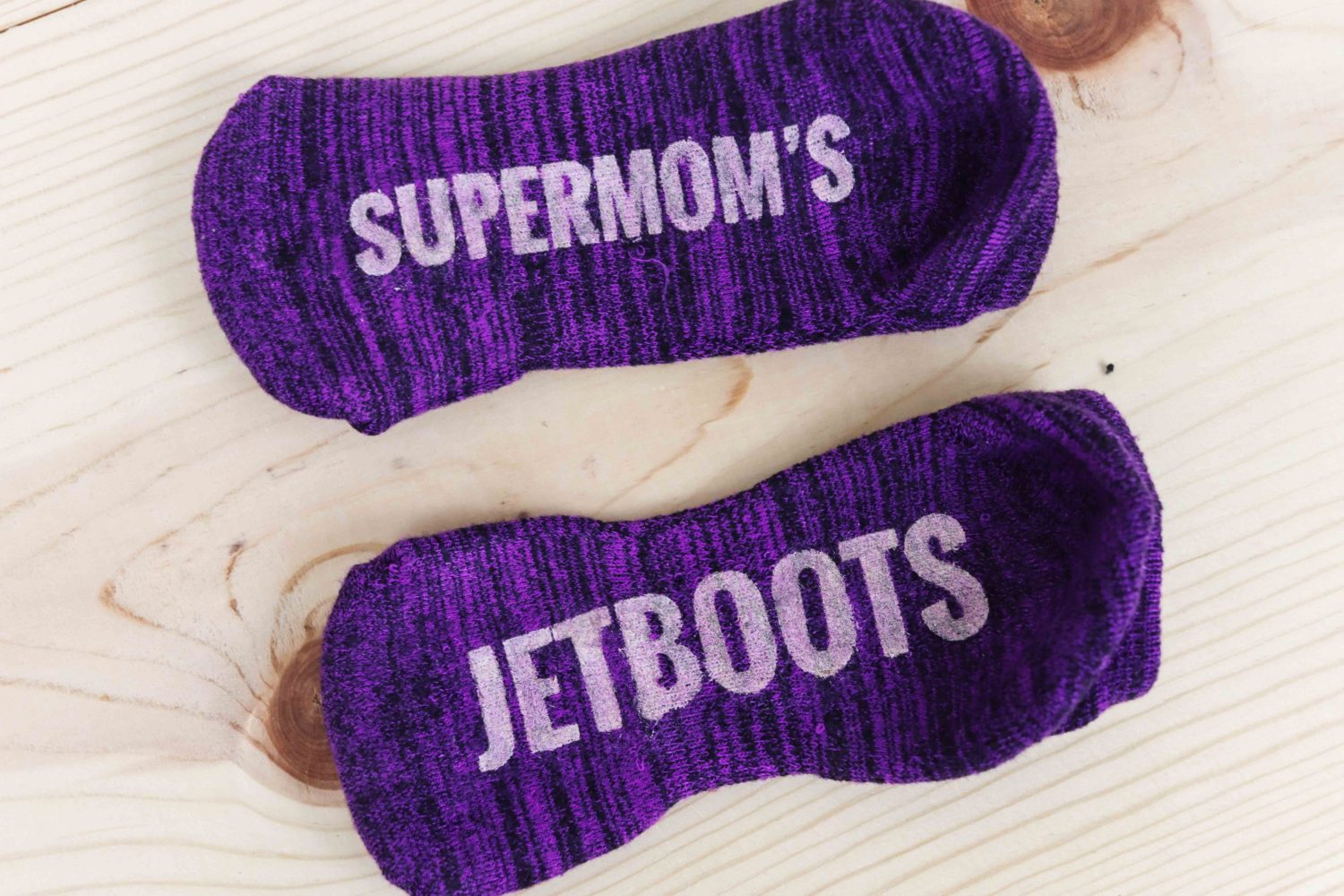
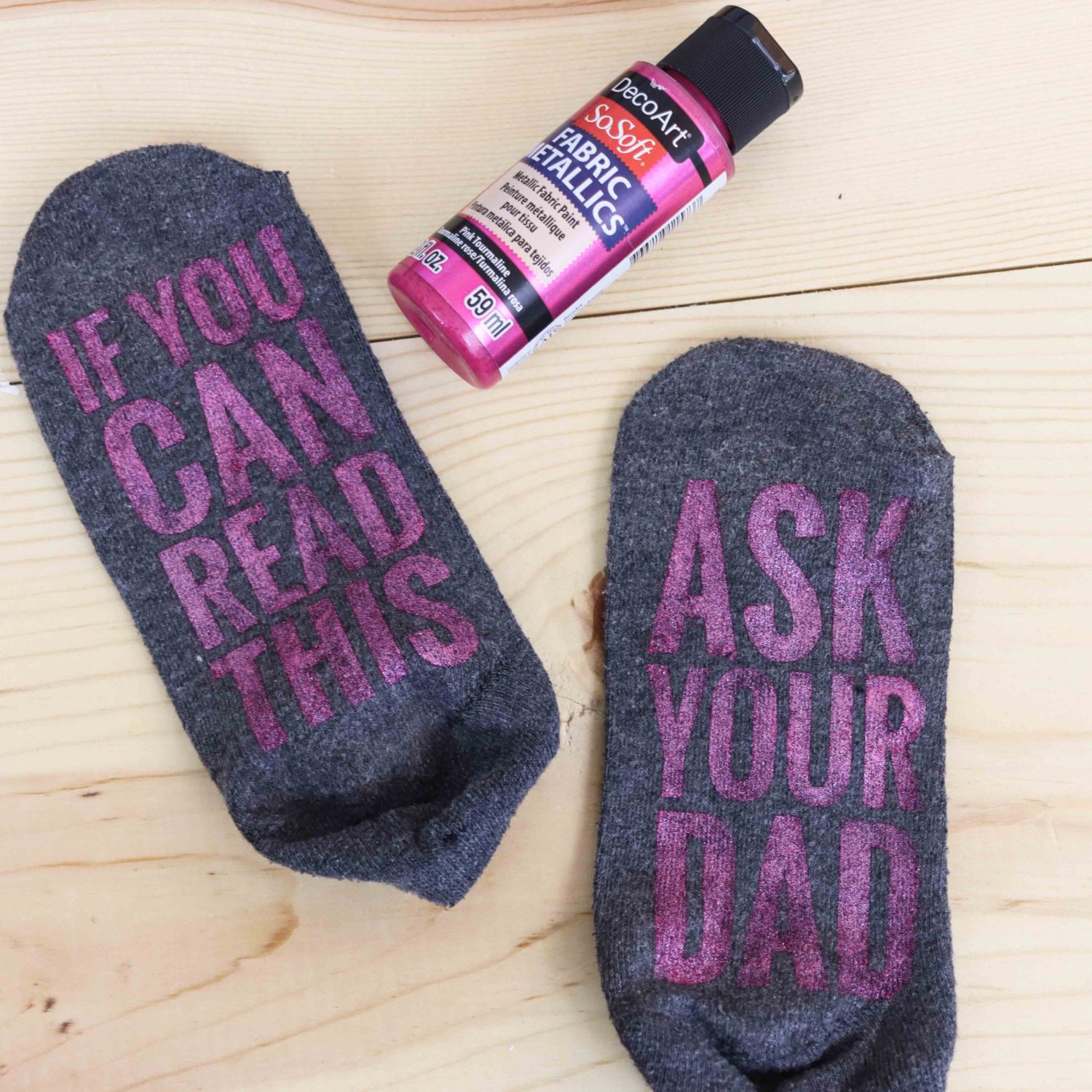
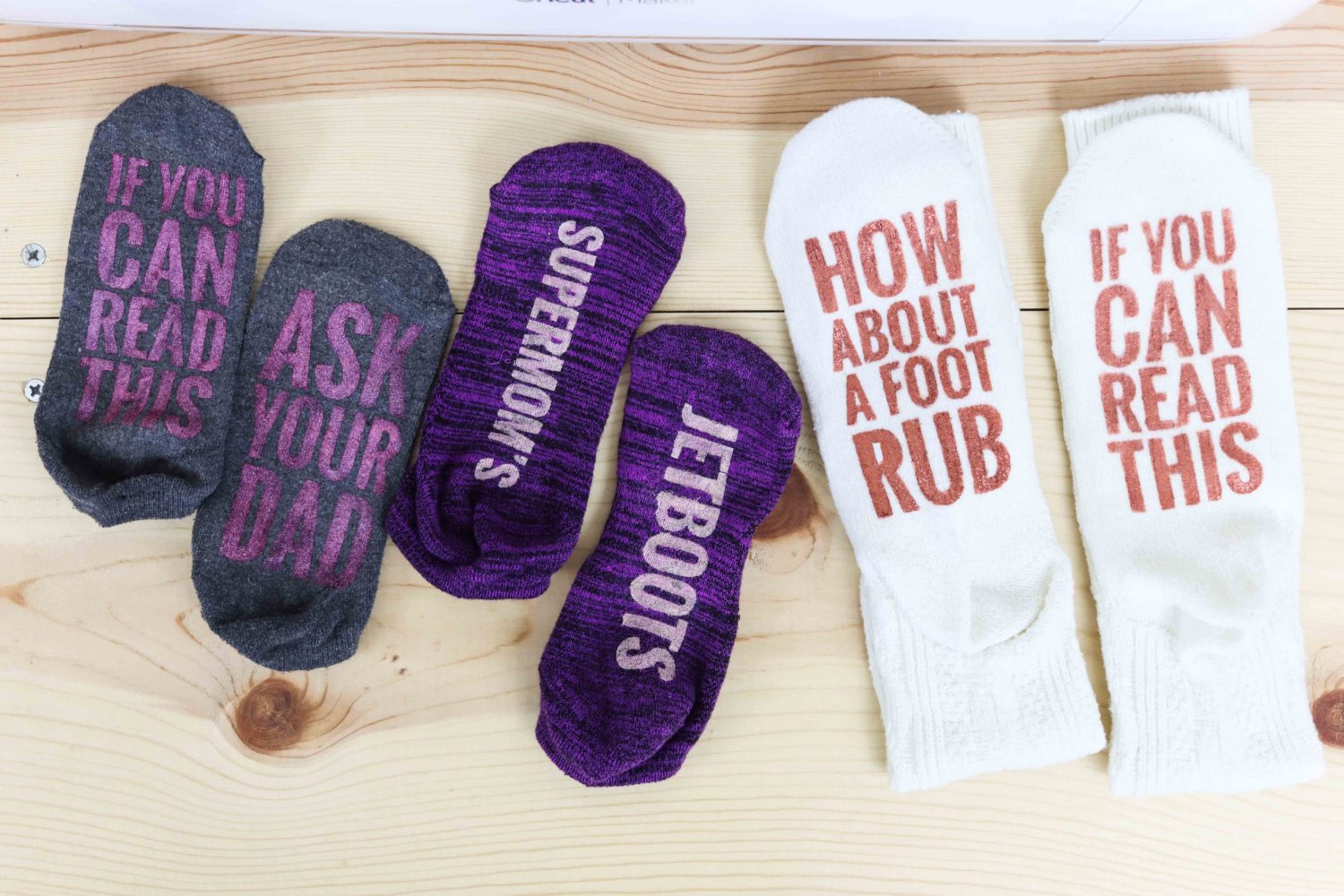

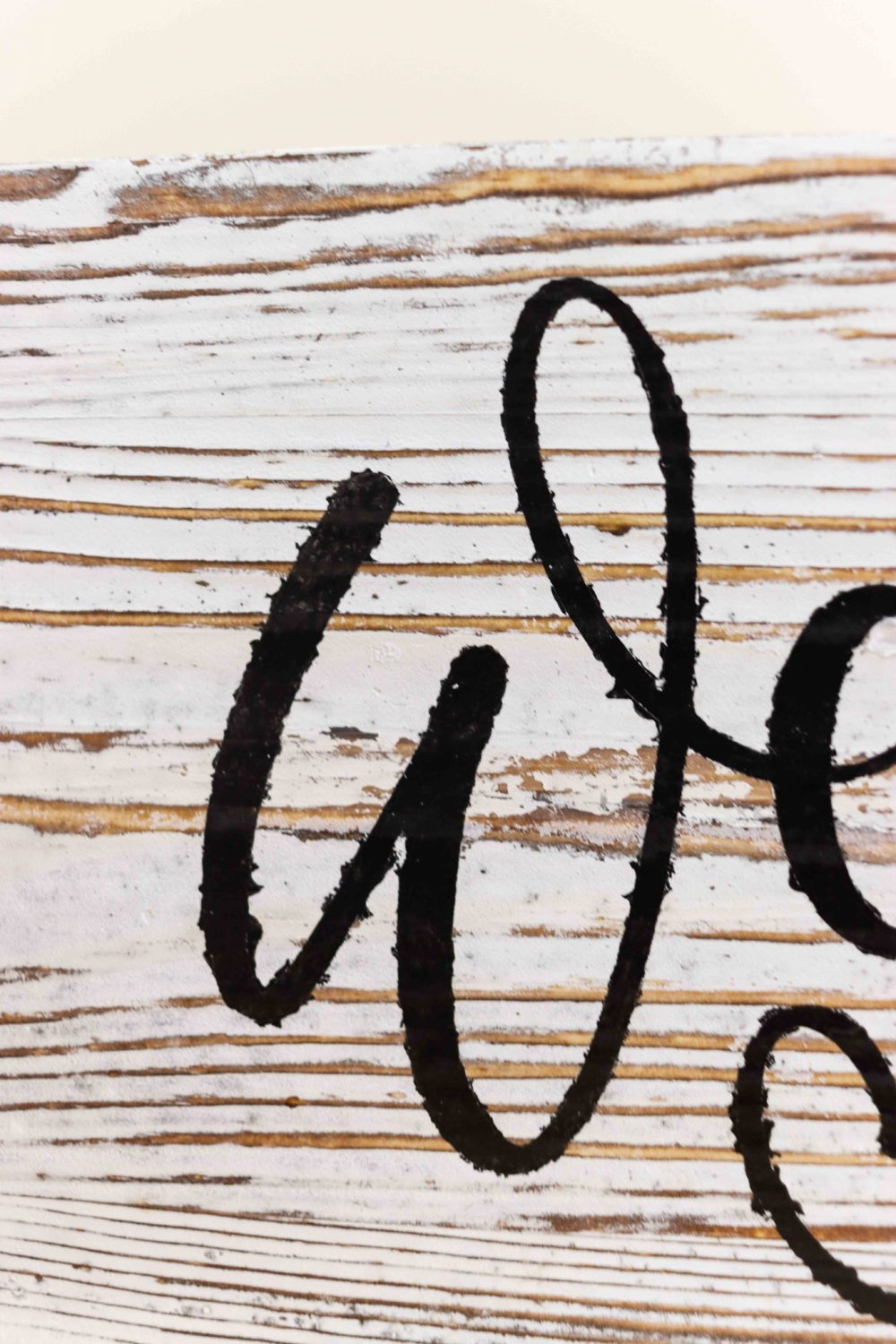


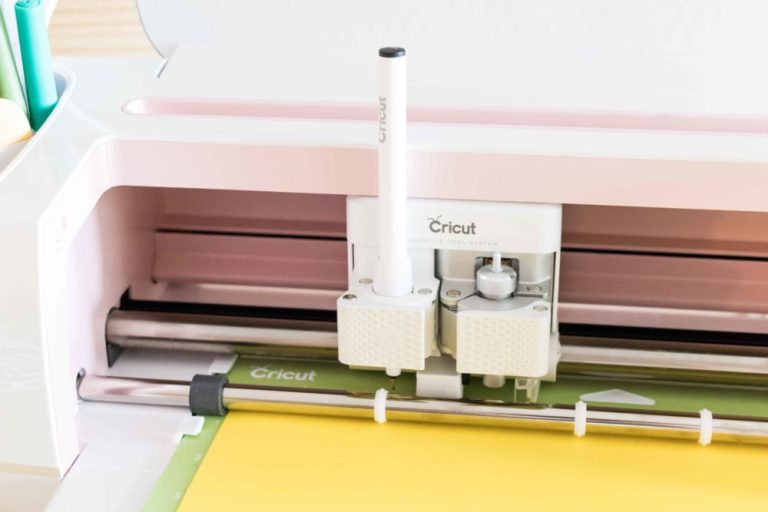
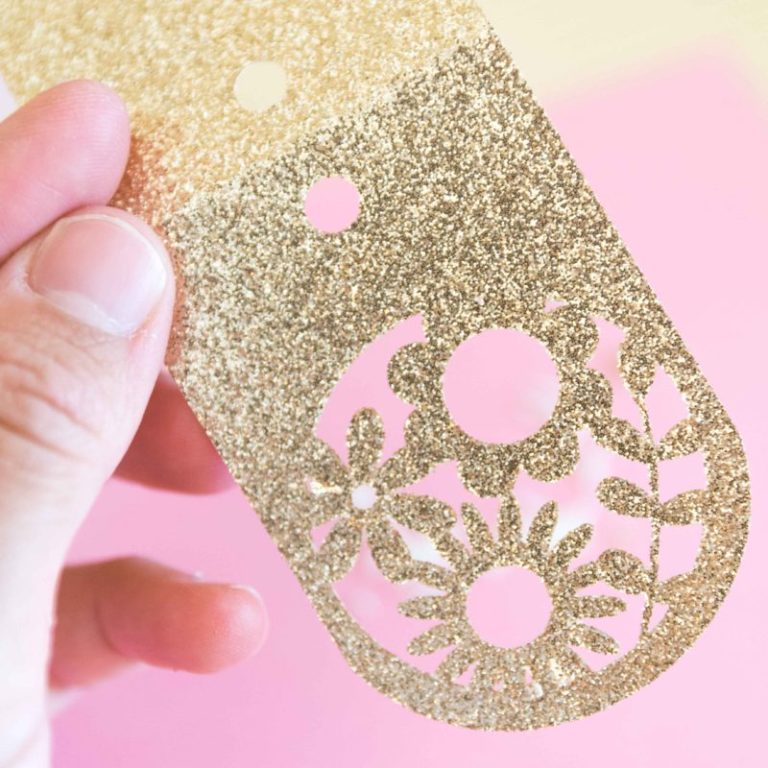

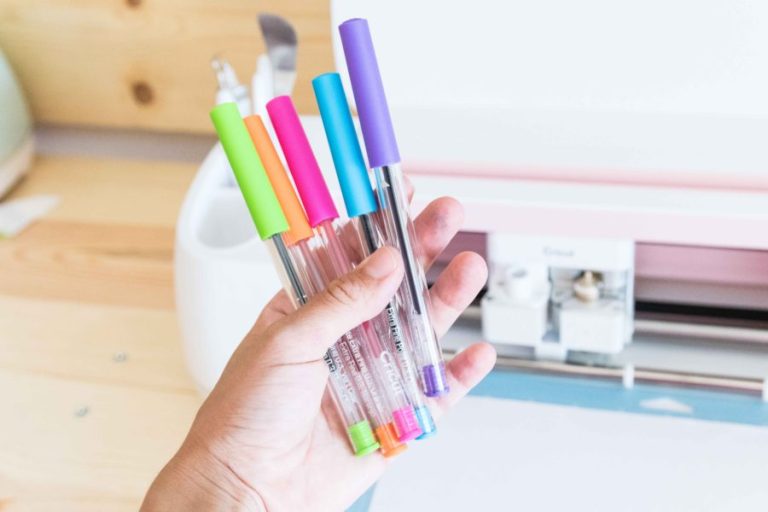

Hello! I’m looking to do this in a classroom setting. If I ironed the stencils the day before would they stay adhered to the shirts?
I don’t see why not. I think they’ll stay put if you don’t fold the t-shirts. You can also bring an iron to the class to touch up some areas in case it becomes loose.
Thank you.
I will try Freezer Paper. Have it and did not try yet.
@Gundi, freezer paper also is great for applique directors are on freezer paper packaging
On the wood and stencil, I would recommend taking a exacto blade and make a cut following the stencil to have a little dam for the paint to stop.!?!
I gotta try this 🙂
@Brenda, you can get Annie’s transfer paper with its red pencil and trace reverse then lye it on fabric, wood and whatever they say and turn design face side down use dry iron and set transfer red pencil marks transfer
The transfer carrier you link is unavailable on amazon, is there another one you can recommend? Thanks!
It’s back! I’ve only tried that one.
Would the DecoArt paint be good for fabric stamping? Thanks. I love your tutorials and refer back to them often.
Really enjoyed the tutorial! One question, I turned to the custom settings on my Explore Air2 and can’t find a freezer paper setting, any recommendations on what to try?
Did you click on “Browse all materials” you can select parchment paper it’s very similar.
I NEED help! I lovvve your tutorial! Its so informative and easy to follow! I have a Cricut Explore 1 and a Cricut Explore Air 2. Neither of them have a freezer paper setting in the custom section. I can’t seem to get them to cut my designs without eating them along the way!
Please help!
Jean Berg
After selecting custom. Go to Design Space (right before cutting) and click on “Browse all materials” you should find it there!
Thank you for your help enjoyed this tutorial.so inspiring.
You’re very welcome 🙂
Enjoyed reading about using wax paper to stencil! I’m going to give it a try! Should save lots of money! Thanks!
You’re welcome 🙂
Can you use a heat press to set it? And what settings and time?
Yes, you can! Set it anywhere between 310 and 330 and press for about 5 seconds.
Thank you for sharing! Newbie here lol so wondering, can you reuse the stencils or do you need to make new stencils for each item you paint? Again, thank you!
You need to make new ones. You can try resuing them but I feel they will lose their shape when you remove them from the T-Shirt
Catalina I have a Silhouette machine and actually just bought some freezer paper to try this project. I was glad I found your blog on Pinterest. I love doing crafts and am always looking for new things to do.
I do have a question for you. Do you prefer a Cricut over a Silhouette? I have thought about buying a Cricut but just am not sure if it is necessary.
Thanks.
Hi Edith, Cricut is the cutting machine I decided to go with, but I think Silhouette is fantastic machine as well. If your Silhouette covers all your needs, you don’t need a Cricut.
Found your blog via a PINTEREST link…
Thanks for re-inspiring me to get busy with my freezer paper designing efforts. I want to get into silk-screening, but it’s costly. Been trying to get to other methods. With the stimulus payment, I was thinking of buying the costly items. 🙂
I loved seeing the example of washing a piece too soon (not heat-set). Never seen that before. Also like the brand comparisons with paint and the glow in the dark photos. I want to try it on paper, but not sure it will work with all the wax on the freezer paper, but I will try. I really liked seeing the wood effort. It made me think paper might work better.
Have you tried PRINTFUL for print-on-demand options?
Finding the best way to design there is a problem for me. I’m heading into my own equipment to have more control over the design and inventory, but Printful has some great points. Drop-shipping means no inventory.
Are you selling t-shirts?
I guess I have commented enough. 🙂
Thanks, again, to you and GOD for the reminder about freezer paper options.
I am glad I was able to inspire you! I love Freezer Paper stencils. Now you can see all the possibilities. I haven’t tried Printful, as I don’t sell t-shirts or things like that. Have a lovely day 🙂
Great information and full instructions, easy to follow !! Thanks so much!!
You’re welcome!
Sorry, I just thought about it why do you have to wash it ??
there’s a section in the tutorial at the end that covers heat setting and washing.
Thanks for great information!!! GOD really used this to bless me!!
Question do you wash and dry the shirt after using the fabric paint?? Or just wash
After the t-shirt dries and I set the paint I treat my t-shirt like a regular one I bought at the store. Just take into consideration the care the fabric needs.
Awesome review. Thank you for your hard work and time to do this article.
I have one question though. “What is a heat transfer carrier sheet?” Is it another product that has to be purchased? It’s not the same as the vinyl transfer is it?
It’s different, the Heat Transfer Carrier sheet is the backing of heat transfer vinyl. You can buy them or use a carrier sheet from HTV.
Thanks so much for your very thorough and detailed tutorial! You really took time to experiment and write everything down for us. I appreciate your work!!
Hi, I saw where you can get clear contact paper at Dollar Tree and use it for stencil material in your Cricut, then use this stencil on wood and seal with Modge Podge to keep the paint from leaking out from under the edges. Comes out perfect! I haven’t done it yet, but have seen examples, and it was very nice. By the way, I noticed Dollar Tree sells Modge Podge, too!!!
Thank you so much! This technique is on my list to do!
This, by far, is the best tutorial I’ve ever seen on Freezer Paper Stencils. I’ve been using a basic version of this method for a couple of years and never knew about the option to get carrier sheets. I’ve been super limited by not wanting to deal with the insides of letters that need to be hand positioned because I don’t want them crooked or I don’t want to burn my fingers.
Thanks so much for all the detail and the link to the carrier sheets. Also, big thanks for the ink review – I like to paint dark colored shirts, and I’ve had a lot of trouble with finding good opaque inks.
You’re very welcome, Susan! I am glad I can help. I agree the carrier sheets are AWESOME!
Great post. Thanks!
Extremely thorough and detailed tutorial – thanks so much for not only recommending everything, but for pointing out potential pitfalls and tips. Much appreciated! 🙂
You’re very welcome Kim! 🙂
Wow this was awesome information on usinging freezer paper on fabric and wood. Have you tried it as a template for glass?
I haven’t. It’s on my list to do!
What temp to heat freezer paper with an easy press?
315 °F should work.
So glad to find you and all your great ideas, tips, and great tutorials. Can’t wait to try this one! Thanks so much for sharing
You’re very welcome, Donna! 🙂
My cruise explorre doesn’t have the freezer paper as a option What setting would you suggest?
Hi Megan, move your Smart Set Dial on your Cricut to custom and select material from Design Space.
Love the video! I would love to see a video all about paint! Thabks
It’s coming soon!
I love this method! As far as paint goes, I use normal acrylic craft paint, mixed with Delta Creative Textile Medium. When used according to the directions, the paint washes so soft and looks screen printed. I’ve used all colors, including metallics, and it’s worked 100% of the time for me. It’s so much cheaper and has better results than all other paint options.
Hi Heidi!
Yes, I found out about fabric medium after I bought some paint and was almost done with the article. I guess I should write a post about it. Thanks for the input!
Thank you for such step-by-step step instructions! I’m going to give it a try ?
Yay! Let me know how it goes.
Very beautiful, now I know what to do with all my paints. I have a ceramic studio with paints, brushes and porcelain to try these ideas. Have wait until after Christmas. Thankyou again for all hard work.
I am glad I was able to help!